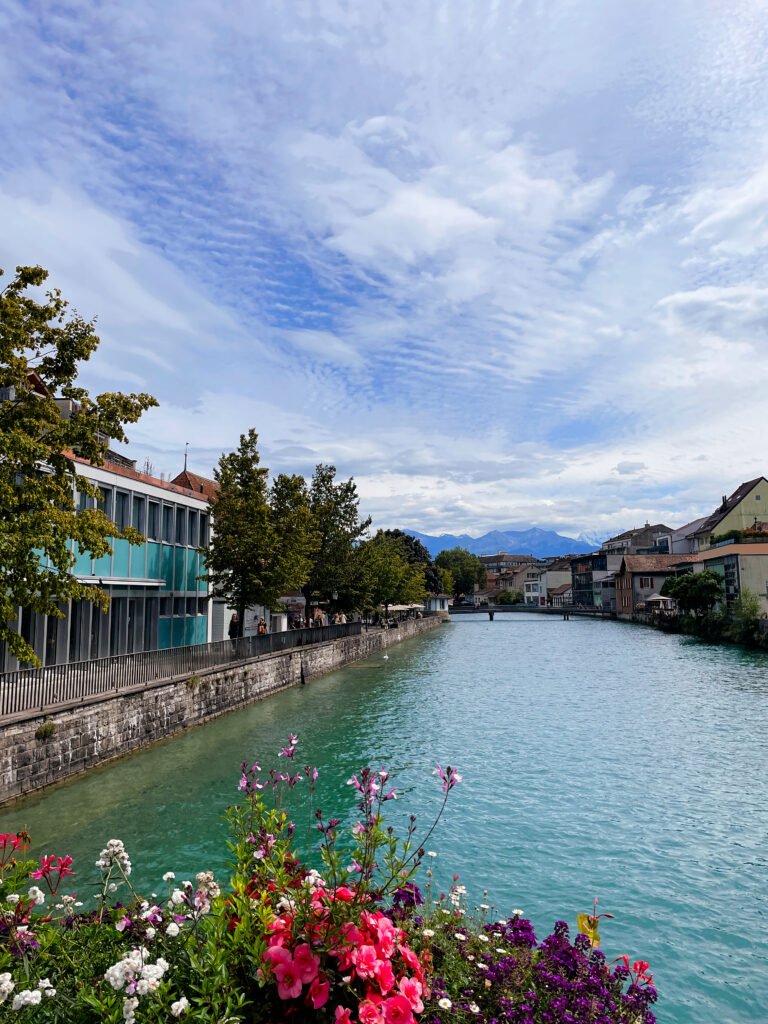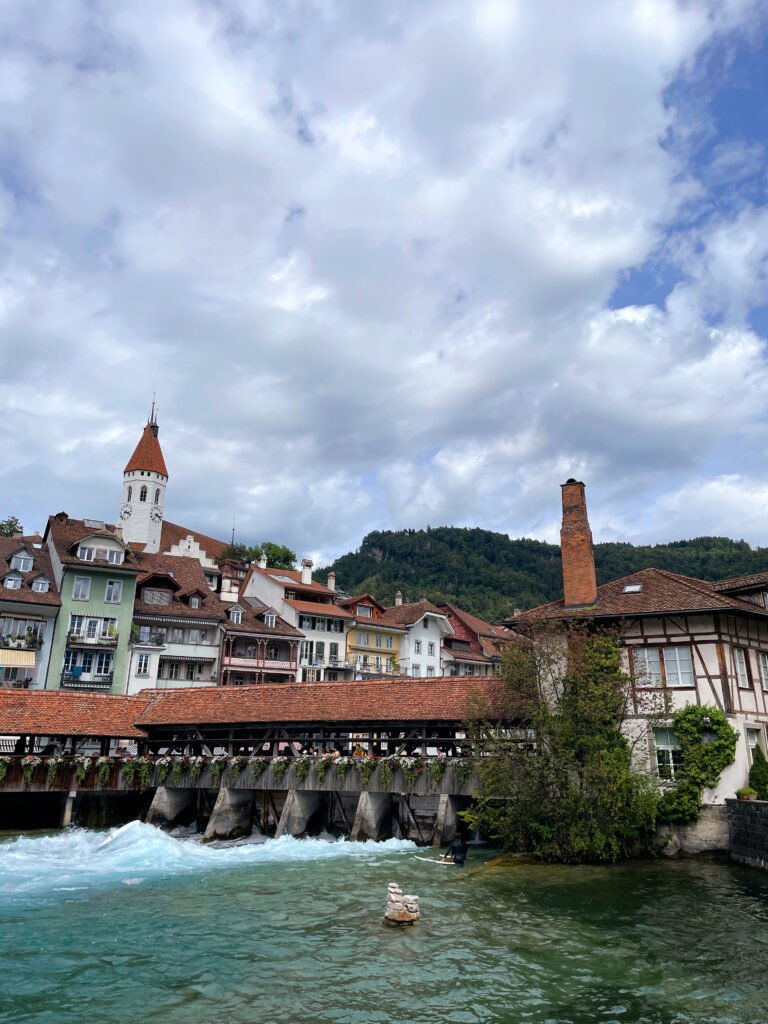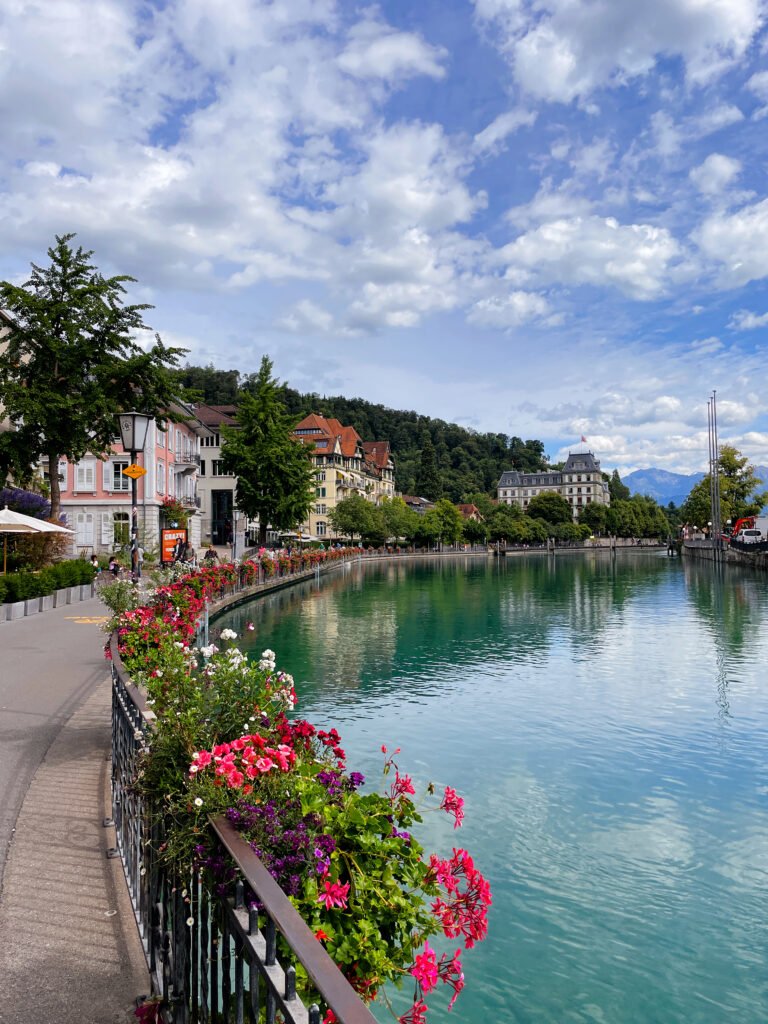Heading out on a road trip across Switzerland has been at the top of my bucket list, and in August 2023, that dream turned into a reality! Starting from Luxembourg, my journey took me through the heart of Switzerland, from the shores of Lake Leman through Geneva, Lausanne, and Montreux, then deep into the breathtaking mountains of Interlaken and its surrounding for an unforgettable week.
On the program:
Day 1: Geneva – The world capital of watchmaking
Days 2 and 3: Lausanne – The Olympic capital of the world
Day 4: Montreux – Famous for the international ‘Montreux Jazz Festival’
Days 5 to 10: Interlaken & surroundings
Day 6: Blausee & Oeschinensee
Day 7: Gelmerbahn & Aareschlucht
Day 8: Trift Bridge
Day 9: Lauterbrunnen
Day 10: Saying Goodbye to Interlaken & visiting Thun before heading back home
This road trip was everything I’d hoped for and more, offering a mix of urban exploration and natural wonders. Switzerland, with its welcoming cities and awe-inspiring landscapes, proved to be the perfect road trip destination.
Switzerland not only has my heart, but also my wallet!
How to save money in Switzerland
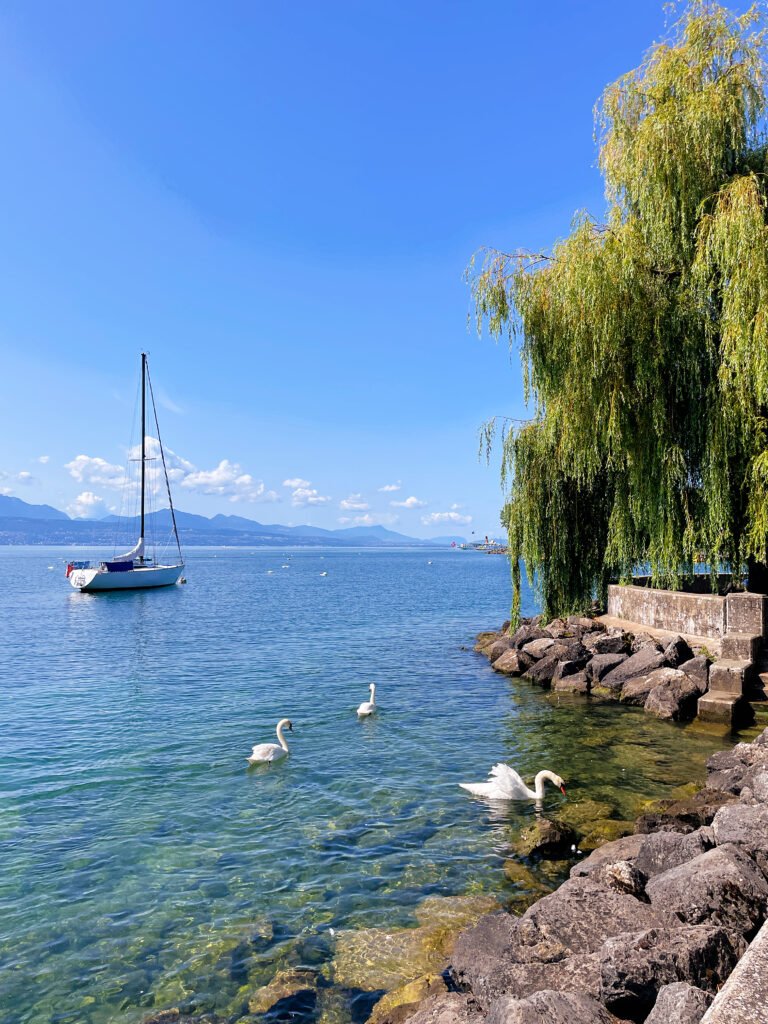
Hotel:
If you’re eyeing hotels and can stretch your budget a bit, opt for ones that offer breakfast and parking in their package. This could cut down your expenses by up to 20 CHF per person for breakfast and up to 30 CHF for parking each day. Just ensure the breakfast option doesn’t exceed 15 CHF. If it’s within that range, it’s worth adding to your booking.
Airbnb:
For a different approach, consider staying at an Airbnb where you have the freedom to cook. Supermarkets can be a more wallet-friendly option compared to dining out all the time. Also, verify that your Airbnb has parking options, as public parking can be quite expensive per hour, and unlike in Luxembourg, it is not free on weekends.
Food & Drink savings:
Make a habit of visiting a supermarket for daily necessities like water and fruits. Stores like Coop can be economical choices. In restaurants, request a ‘carafe d’eau’ as you would in France, since tap water here is safe and drinkable. It’s a simple way to refill your water bottles without buying new ones constantly.
Saving on Fuel:
You’ll find that fuel prices are generally lower in the city compared to highway gas stations.
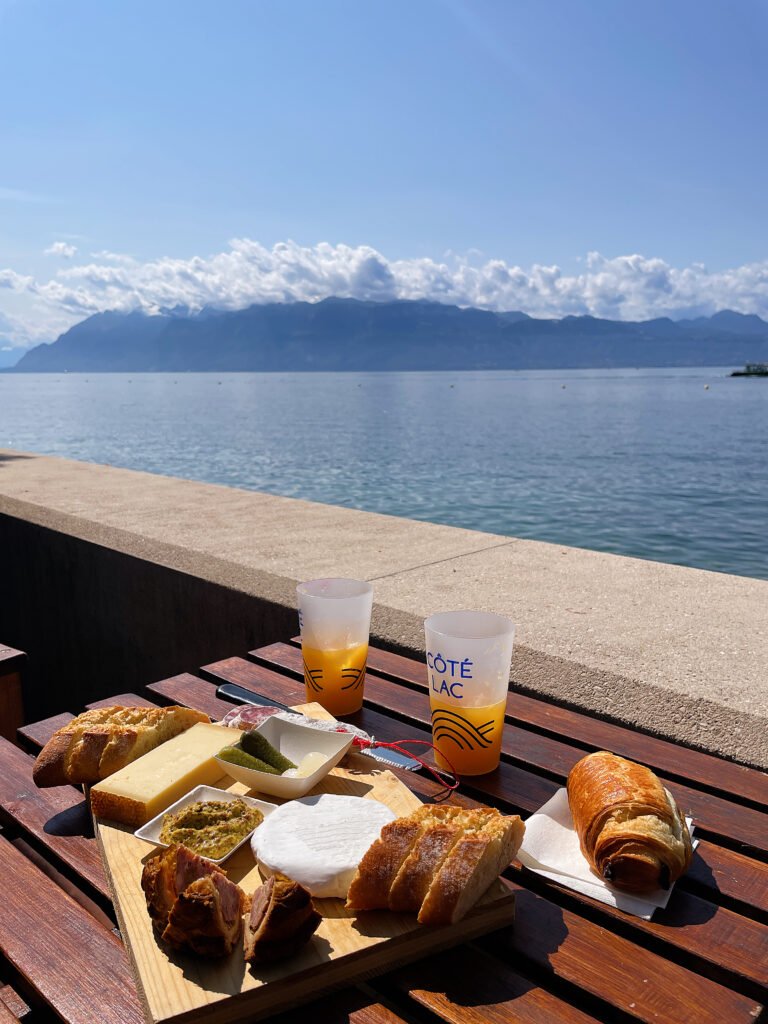
DAY 1
Geneva – The world capital of watchmaking
Geneva, Switzerland’s second-largest city and a French-speaking region (spoken with a Swiss touch of course), is renowned for its picturesque location near the Swiss Alps, stunning architecture, and prestigious museums.
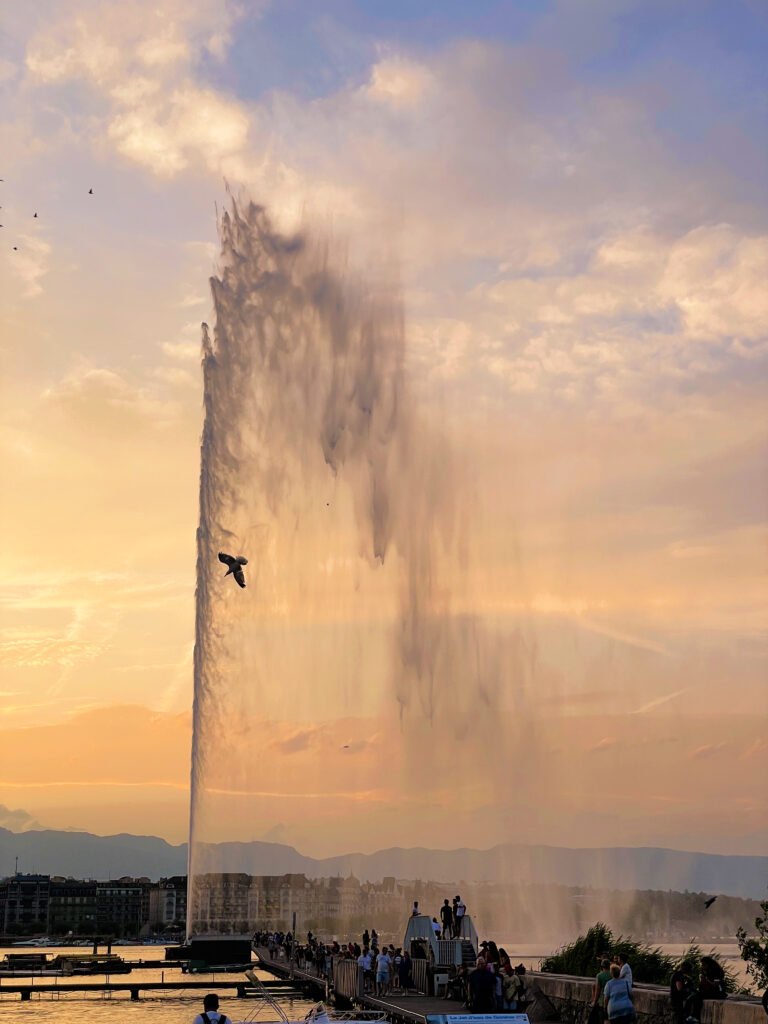
How Geneva became the World Capital of Luxury Watches
Geneva’s journey to becoming a world-renowned hub for luxury watchmaking began in the mid-16th century. The city became a refuge for European Protestants escaping religious persecution, with Jean Calvin among those offering them sanctuary.
Calvin’s influence led to a ban on wearing jewelry, prompting the city’s goldsmiths to seek new avenues for their craftsmanship. They pivoted to watchmaking, applying their skills to craft watches and clocks, embellishing them with precious stones and materials. This pivot marked the birth of Geneva’s luxurious watchmaking industry, known for its exquisite and unique timepieces.
Visiting Geneva without a car
If you’re visiting Geneva without a car, there are several convenient ways to explore the city. Geneva is largely pedestrian-friendly, particularly the old town and the lakefront areas, offering a delightful walking experience.
Should you find yourself further from your hotel or in need of reaching the train station, Geneva’s buses, trams, and Ubers are at your disposal. Buses and trams, running frequently and on time, offer the most cost-effective solution for city travel. They benefit from dedicated lanes, ensuring a smooth journey free from traffic delays.
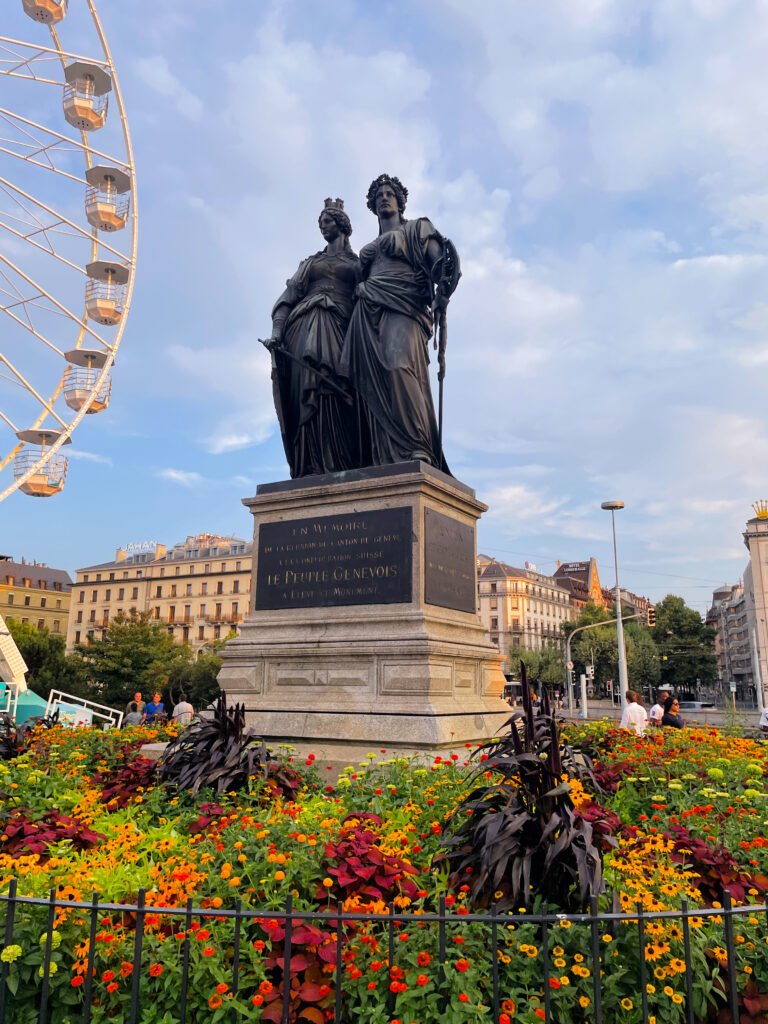
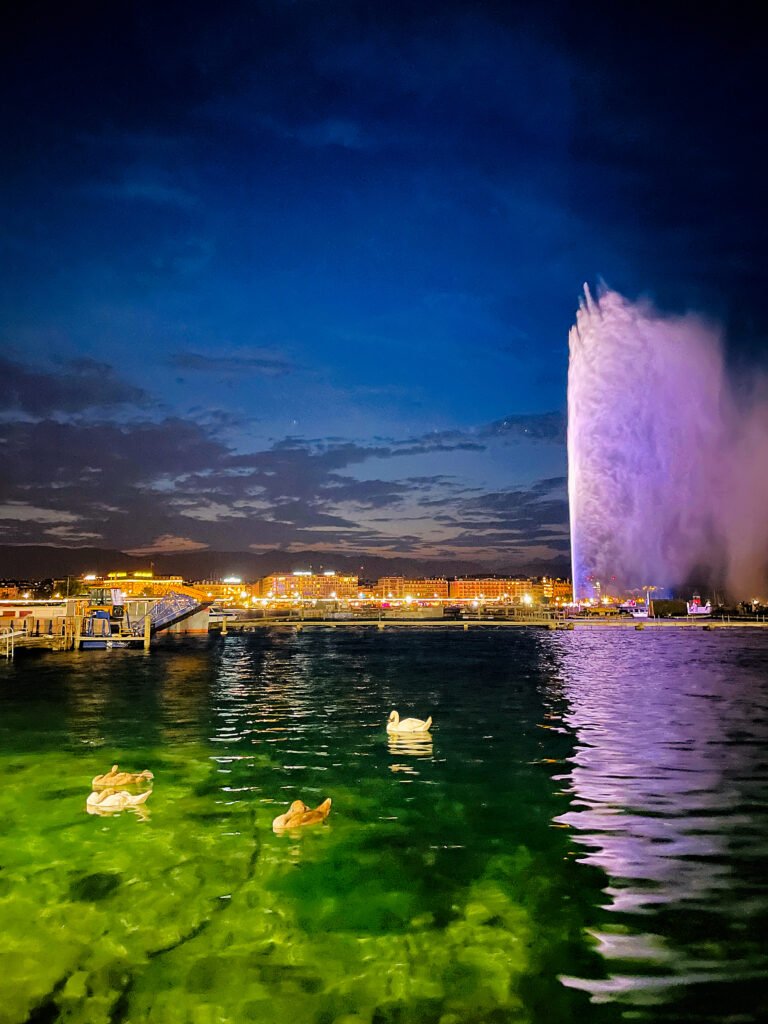
Exploring Geneva in one day
1. Walk through the old town: Start at the Cathedral of Saint-Pierre.
2. Visit treille promenade bench
3. Stroll through the city center
4. See the Jet d’Eau: The iconic water fountain.
5. Relax by Lake Geneva: Consider a boat tour.
6. Tour the Palais des Nations: United Nations office.
7. Admire the broken chair: A poignant sculpture near the UN.
8. Explore Conservatoire et Jardin botaniques de Genève: A heaven for plant lovers.
9. Visit the International Red Cross and Red Crescent Museum: Learn about humanitarian efforts.
10. Walk in Parc des Bastions
11. Discover Place du Molard Square: Local culture
12. Take the Mont-Saleve cable car
13. Relax at Bain des Paquis: A popular local spot.
DAYS 2 & 3
Lausanne – The Olympic capital of the world
Why is Lausanne the Olympic capital?
Back in 1915, no one could have guessed that Lausanne would become a major hub for the sporting world. Now, as you arrive at the railway station, the iconic Olympic rings greet you, signaling the city’s deep connection to the Olympics. But how did Lausanne earn the title of Olympic Capital? It all started with a French baron who adored the area and saw its potential during the difficult times of the First World War. Thanks to his vision, Lausanne is not just an Olympic Capital; it’s also where you’ll find the International Olympic Committee (IOC) headquarters and many international sports federations.
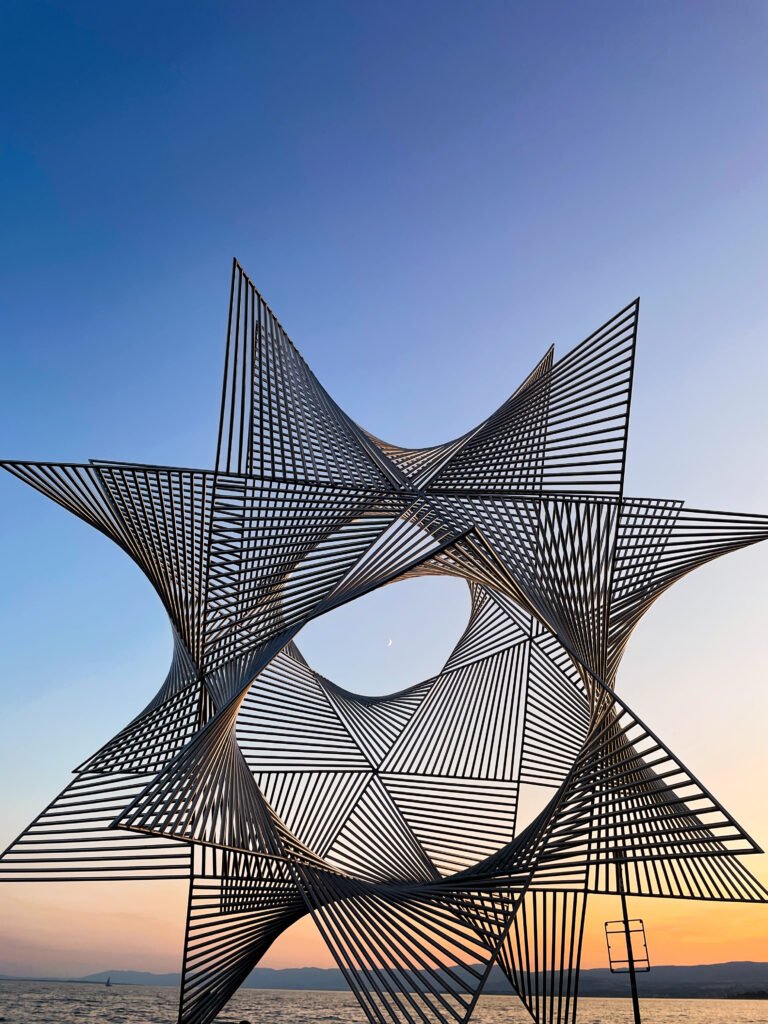
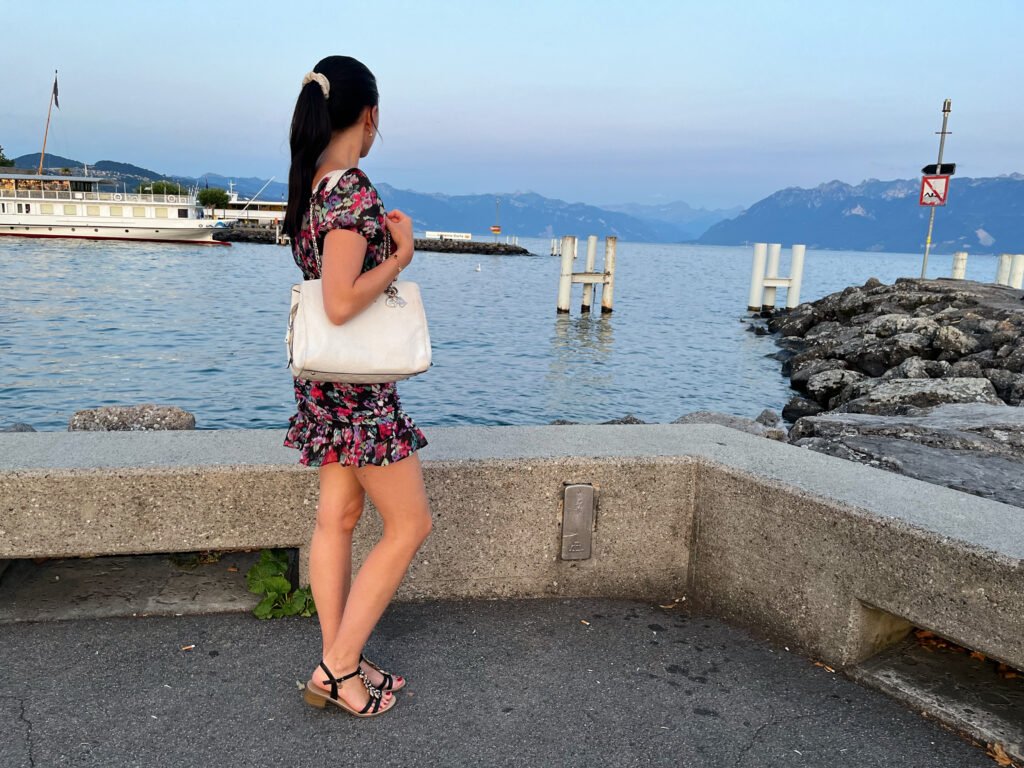
Visiting Lausanne without a car
To really enjoy Lausanne and the Lake Geneva area, it’s good to know the best ways to get around. Lausanne’s quite hilly, and parking can be tough, so public transport might be your best bet.
Lausanne offers metros, trolleys, buses, and regional trains that connect to places like Montreux and Chillon Castle. A key route for visitors is the M2 metro line, which goes from Ouchy by the lake up to the city center, making it easy to get up the hill.
What to do in Lausanne in 2 Days?
1) Explore Lausanne from the top to the bottom – then take the metro back up.
2) Don’t miss the Lausanne Cathedral. Climb the “Escaliers du Marché” for a great view of the city! Also, check out Palais de Rumine and Tour de Sauvabelin.
3) Visit the Olympic Museum to learn about the history of the Games.
4) Take a ferry ride from Ouchy to enjoy the lakeside walk, perfect for a relaxing stroll or just to enjoy the views of Lake Geneva and the mountains.
5) Explore the Lavaux vineyards, a UNESCO World Heritage site.
6) Check out Plateforme 10, the new art district with the Cantonal Museum of Fine Arts (MCBA), the Museum of Design and Contemporary Applied Arts (mudac), and Photo Elysée.
7) Go for a swim at Lutry or Vidy, great spots to relax by the lake.
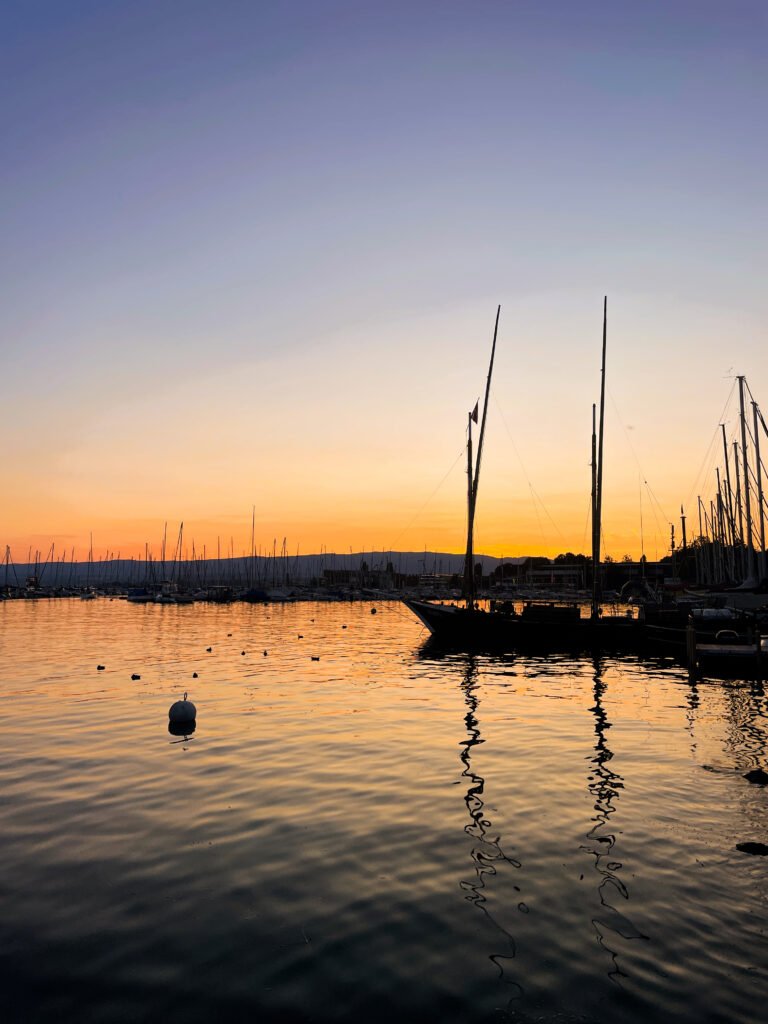
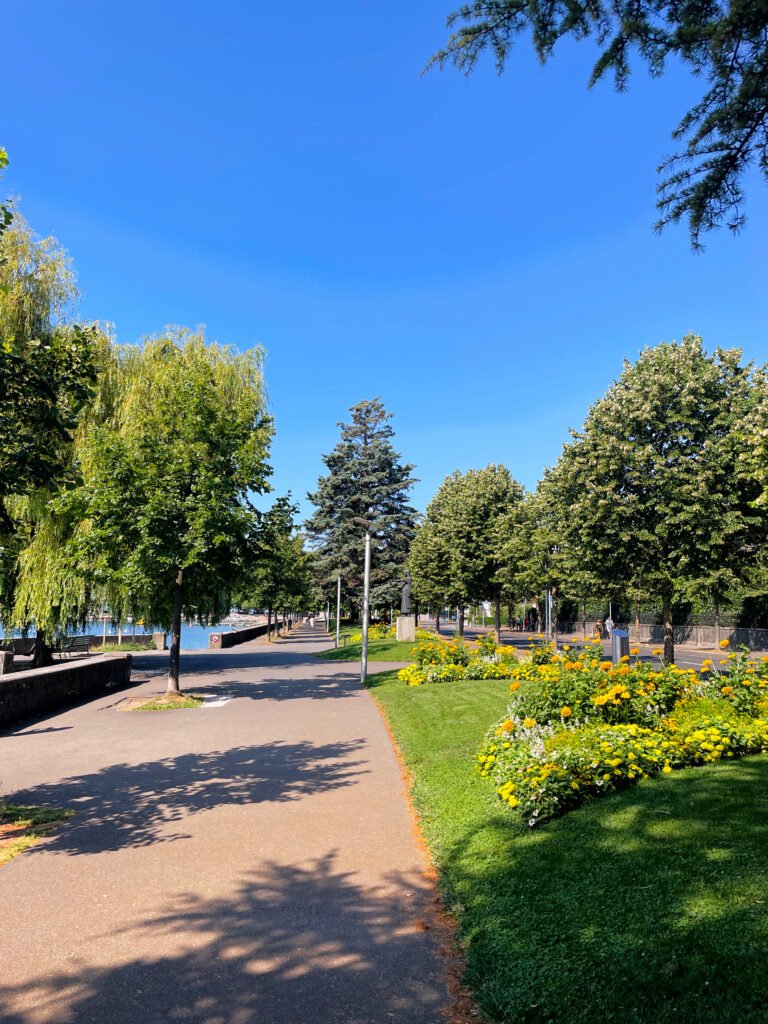
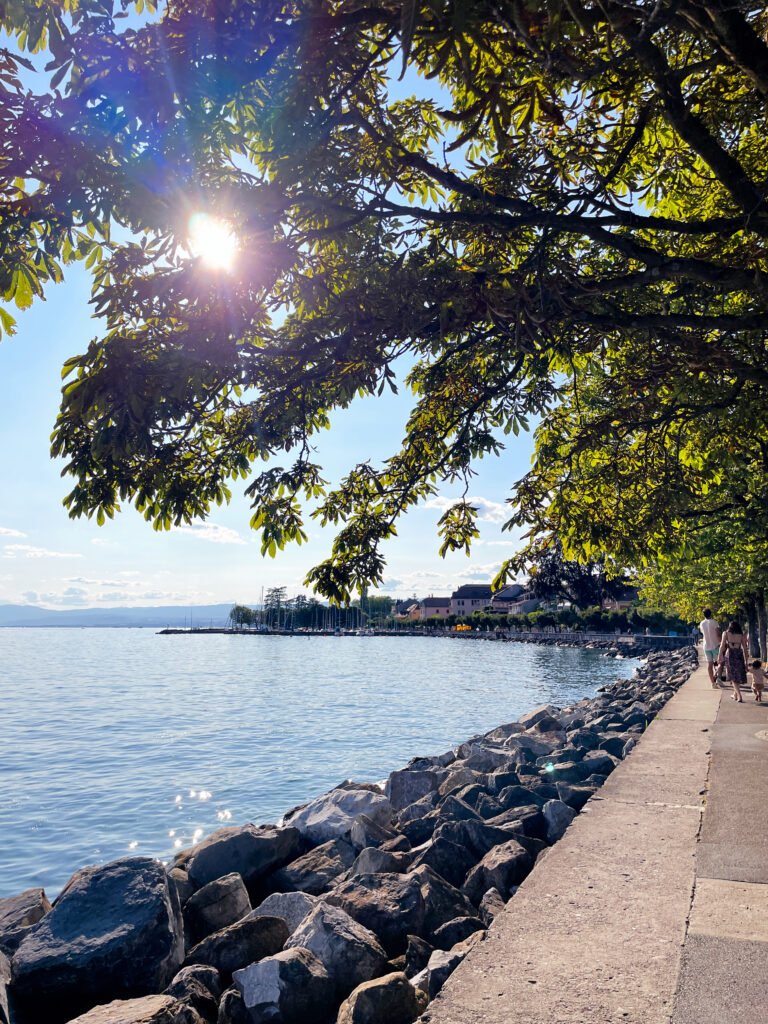
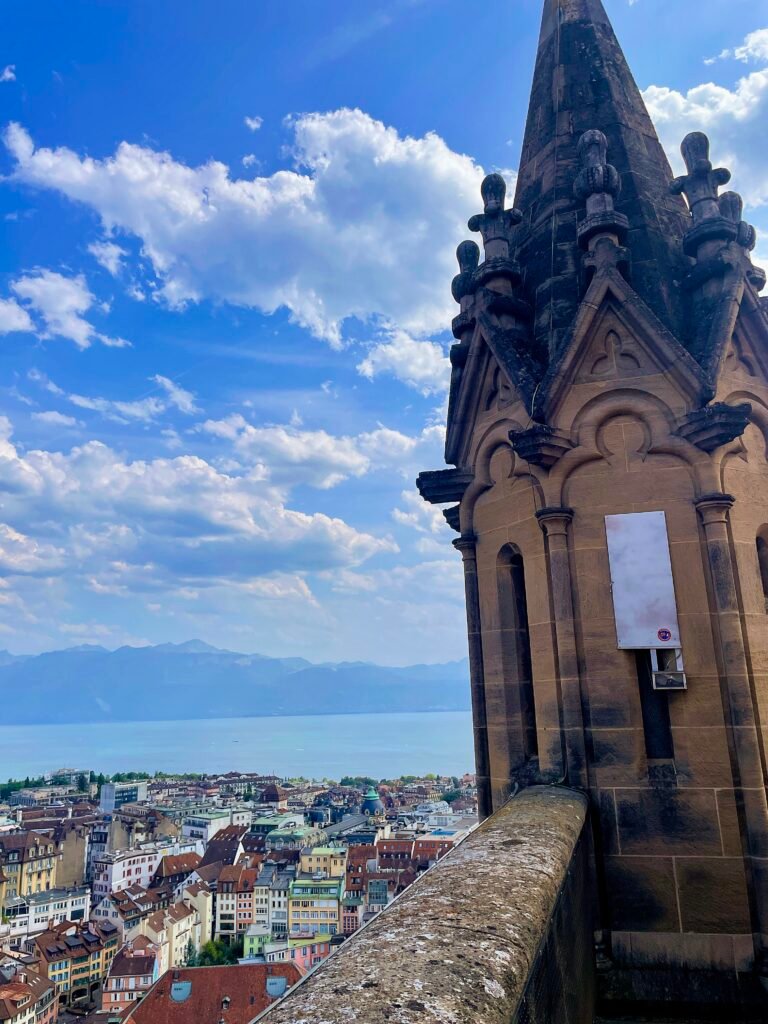
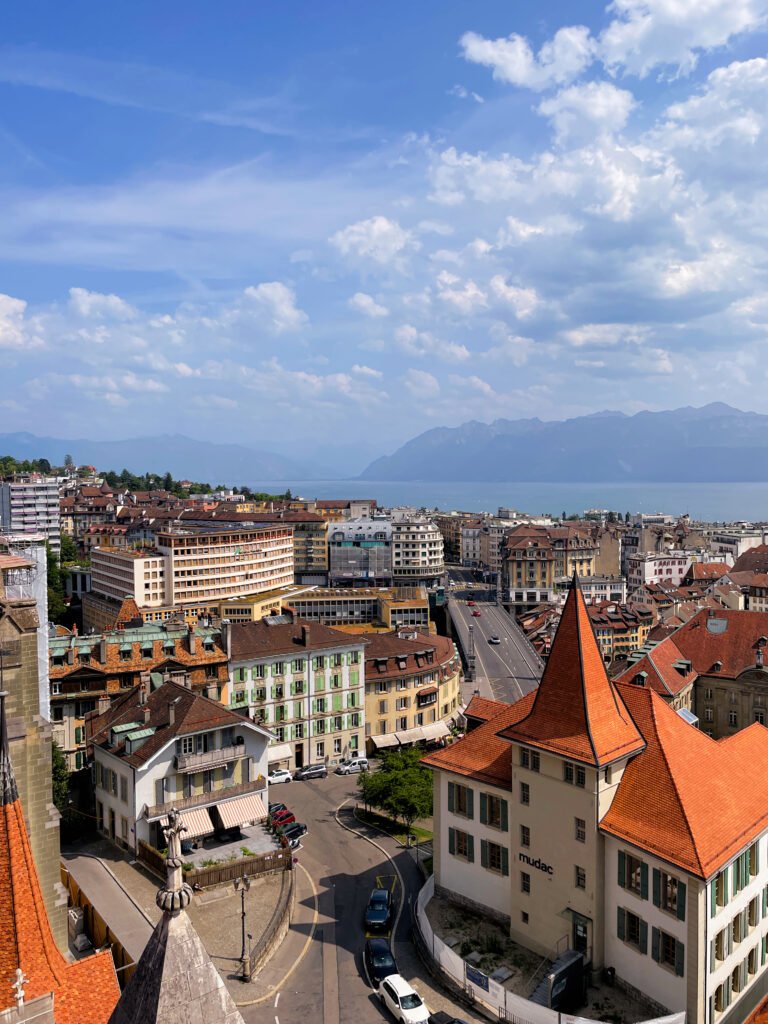
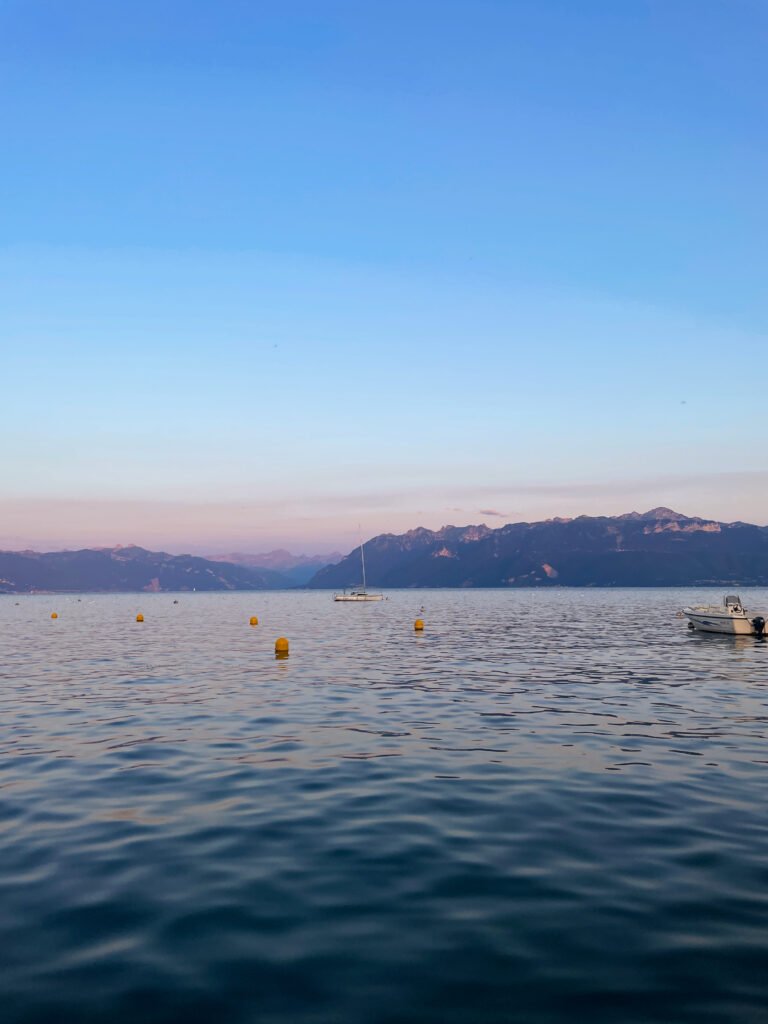
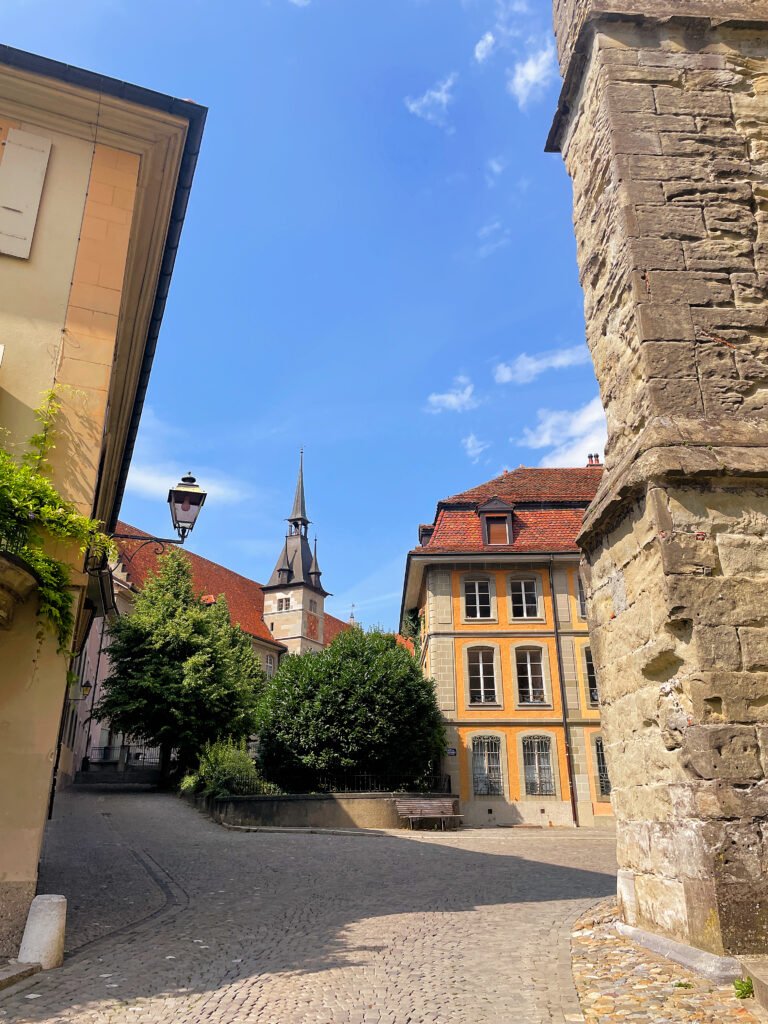
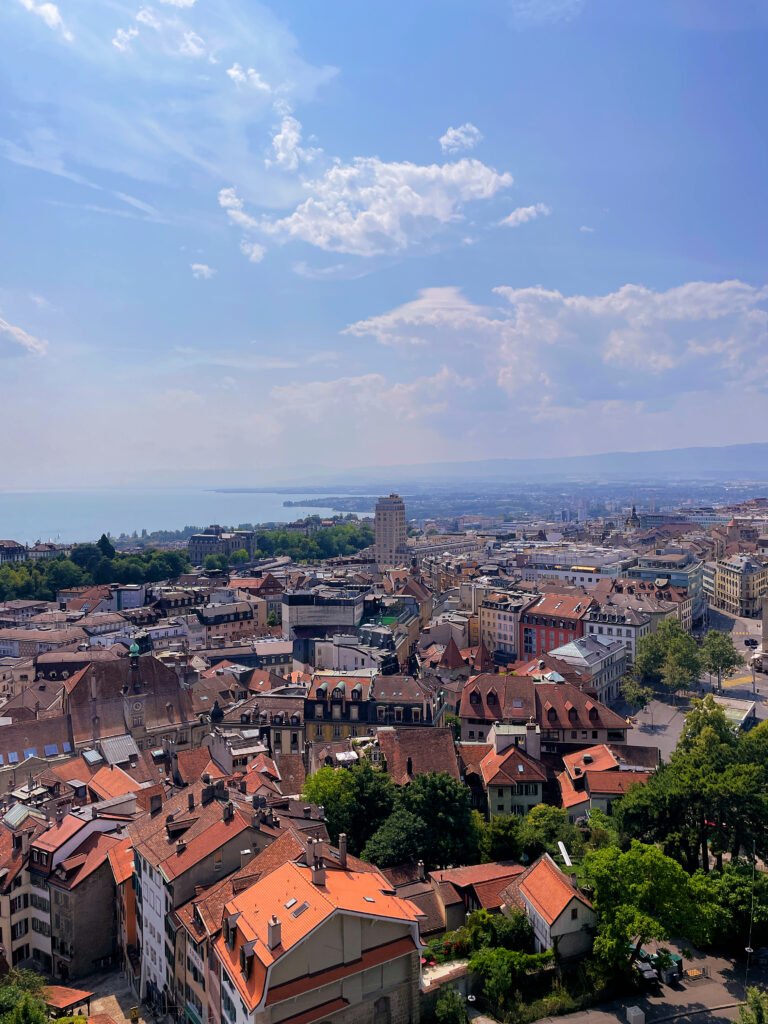
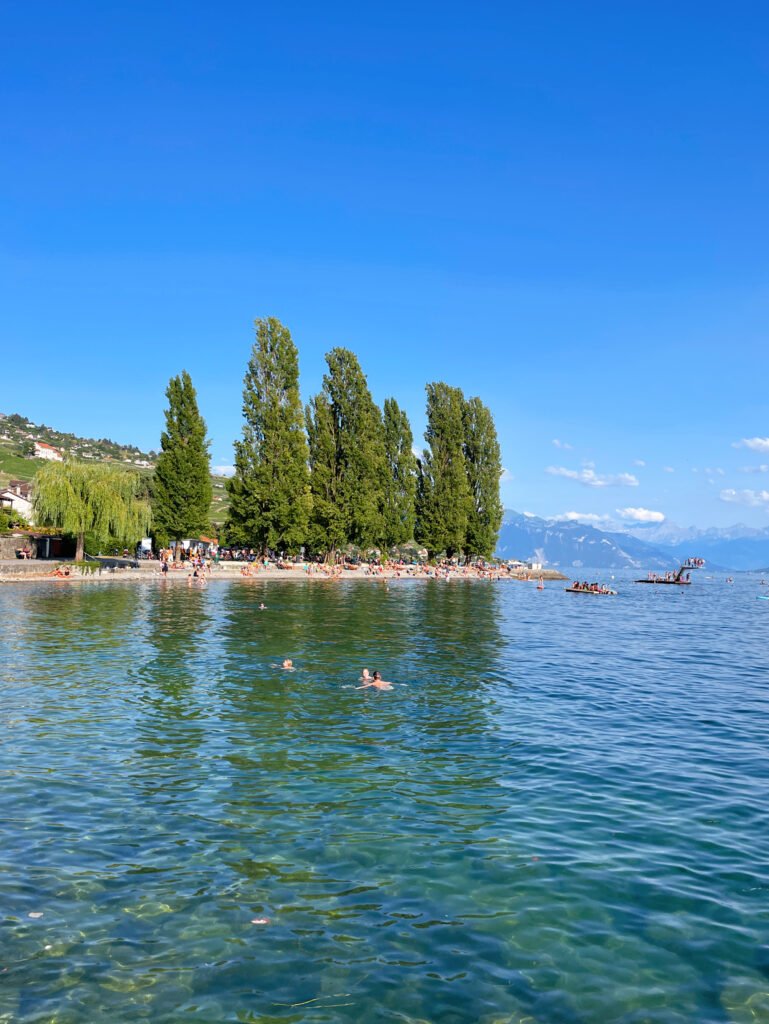

DAY 4
Montreux – Famous for the international ‘Montreux Jazz Festival’
Montreux: A jewel between lake and alps
Just a half-hour from Lausanne, Montreux sits beautifully between the lake and the Alps. With its central location and proximity to Geneva’s international airport, Montreux is an ideal spot for hosting international congresses, conferences, or incentive events. This unique area, firmly rooted in its heritage yet open to the world, is the backdrop of the world-renowned Montreux Jazz Festival and has been a source of inspiration for artists like Charlie Chaplin and Freddie Mercury.
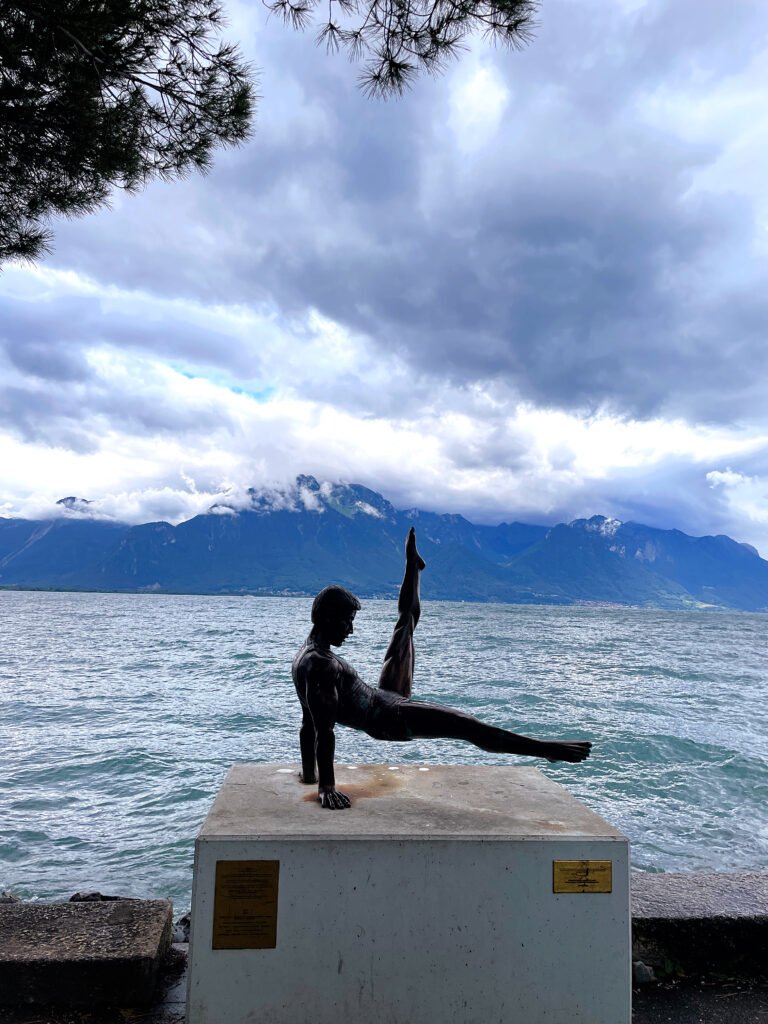
Getting around in Montreux
- By bus: The primary VMCV bus line, number 201, runs every 10 minutes along the lake, connecting Vevey and Villeneuve via Montreux.
- By train: The train is the best method to explore Lavaux, a UNESCO World Heritage site.
- By boat: Enjoy the scenic beauty of Lake Geneva with a relaxing boat ride.
- On foot: Montreux is perfect for walking, especially along the promenade.
- By bike: Experience the area at your own pace by biking through its picturesque landscapes.
Exploring Montreux in one day
1) Montreux Promenade: A scenic walk along the lake.
2) Lake Geneva: Consider taking a boat tour for a different perspective.
3) Freddie Mercury Statue & Walking Tour: Pay homage to the legendary Queen frontman.
4) Château de Chillon: A historic castle, just a 30-45 minute walk along the promenade.
5) Rochers de Naye: For breathtaking views and nature.
6) Vineyards – Lavaux UNESCO: Explore the stunning vineyards.
7) Vevey: Visit this charming town nearby.
8) Charlie Chaplin Museum – Chaplin’s World by Grévin
9) Montreux Jazz Festival
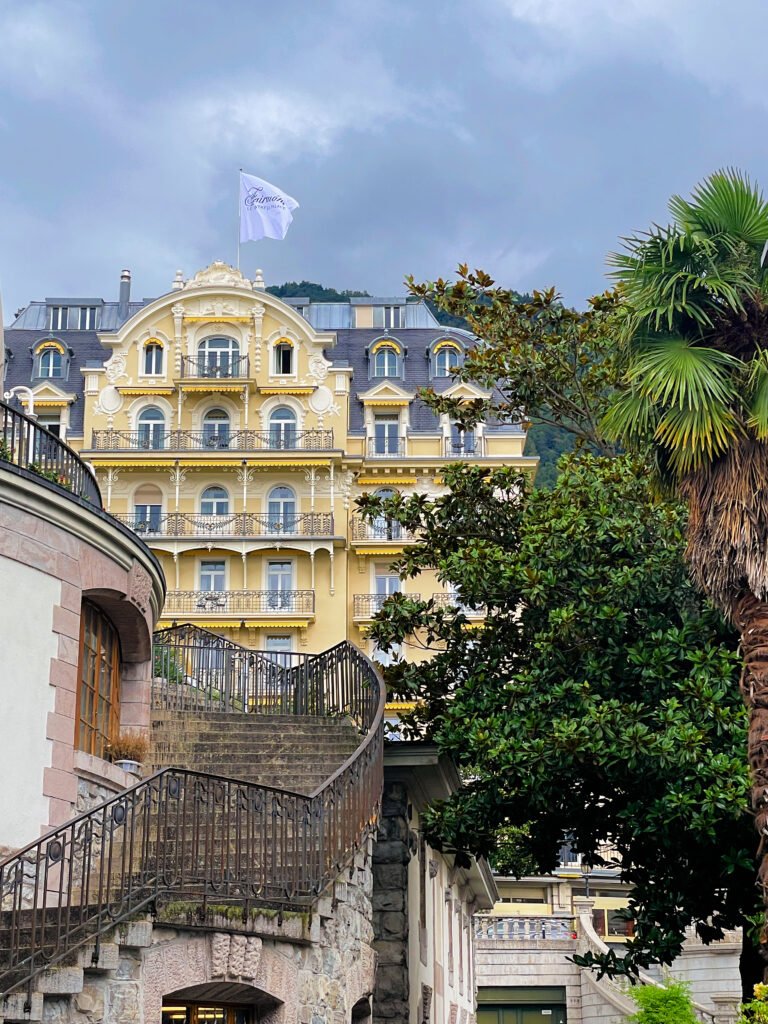
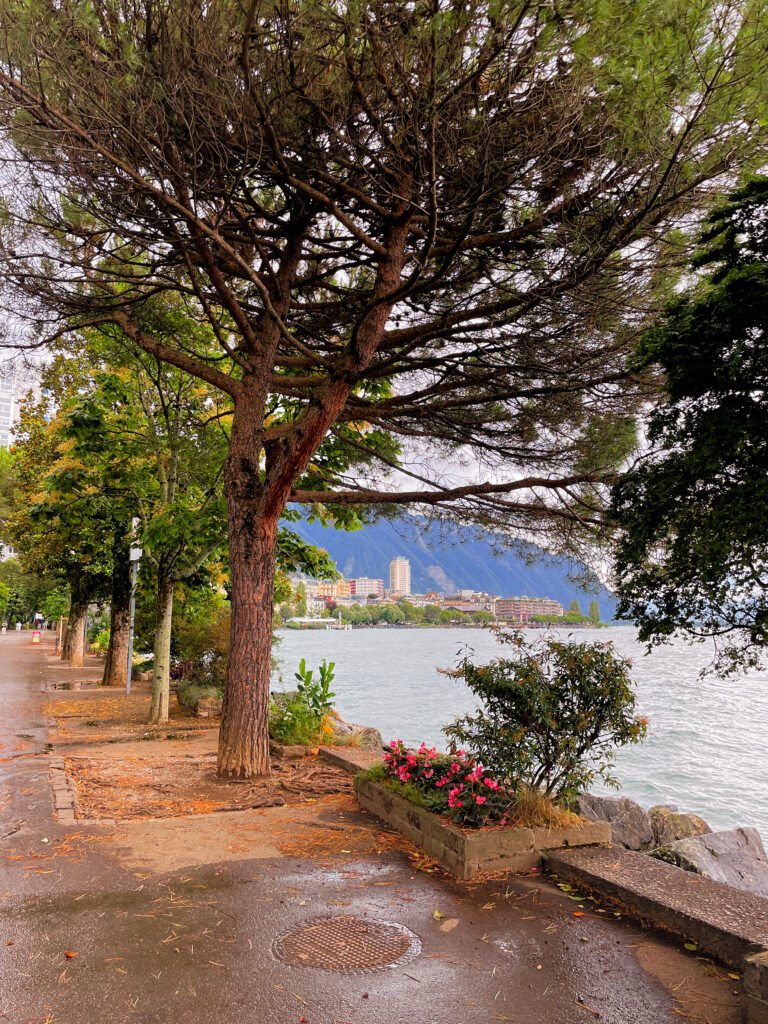
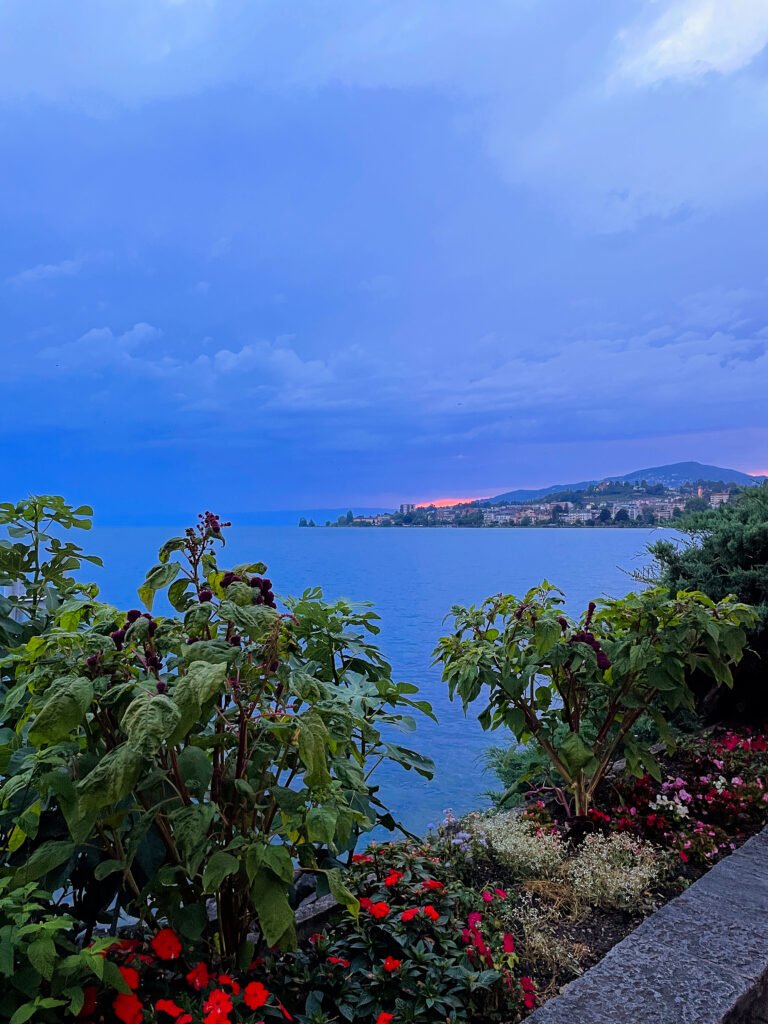
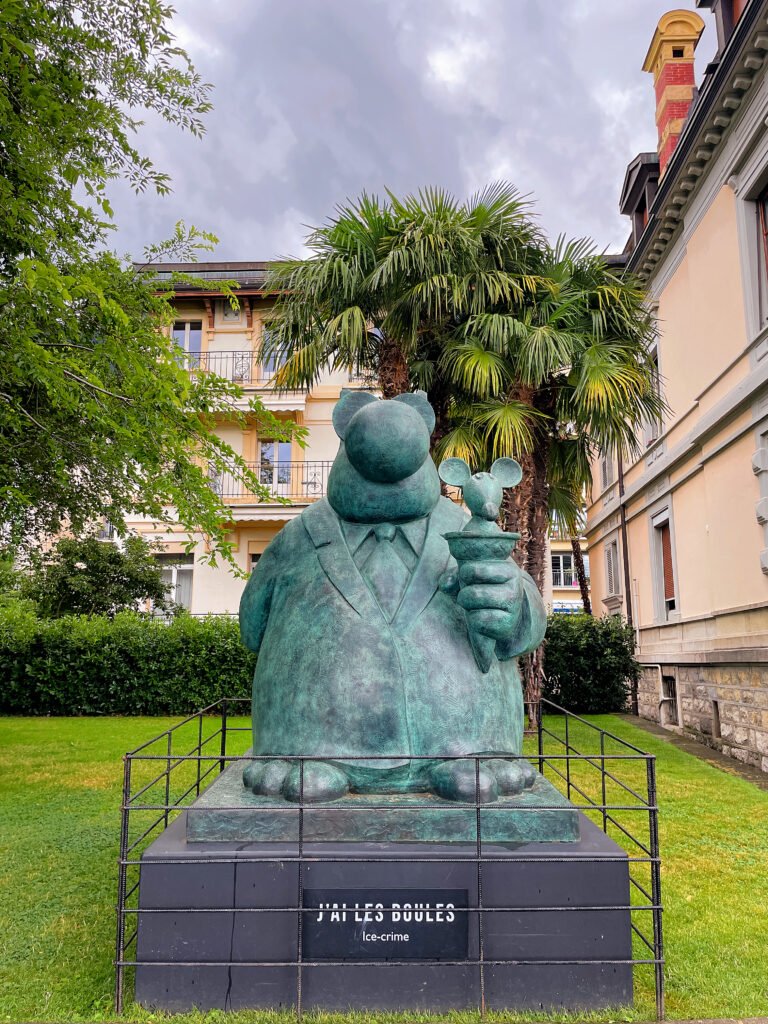
DAY 5
Off to Interlaken and beyond
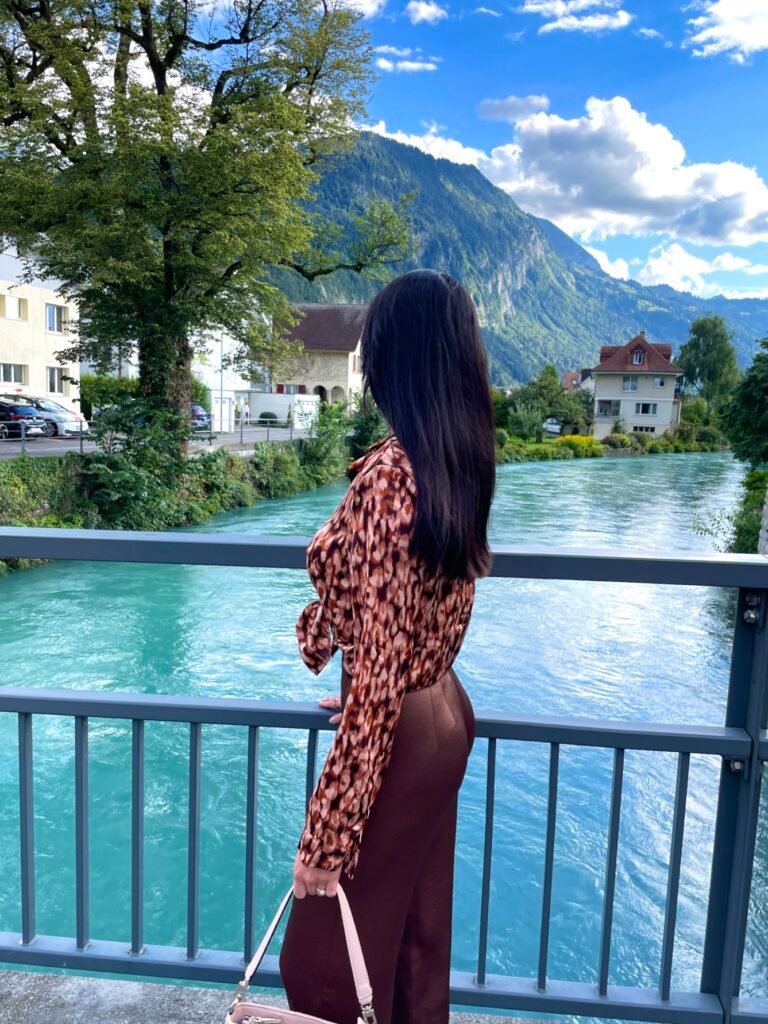
On the fifth day, we made our way to Interlaken, a two-hour drive from Montreux. It was the start of the second half of our adventure, and we planned to spend the next five days exploring everything around Interlaken: the magical Blausee, the stunning Oeschinensee, the thrilling Gelmerbahn, the breathtaking Aareschlucht, the daring Trift Bridge, the picturesque Lauterbrunnen, and the charming town of Thun.
Staying in Interlaken itself can be pretty pricey, so we decided to find a place a little out of the way. We found the perfect place up in the mountains in Habkern, just 12 minutes up from Interlaken. It was the perfect cozy spot to come back to after our days of exploration.
What makes Interlaken a must-visit?
Interlaken is renowned for its blend of outdoor adventures and scenic beauty. From skiing and snowboarding in the winter to skydiving and paragliding in the summer, it offers breathtaking views of the Swiss Alps and the turquoise waters of Lake Brienz and Lake Thun.
Getting around in Interlaken
- On foot: It’s easy to walk around the main parts of Interlaken. You can get from one train station to the other in about 20 minutes.
- Taxi: Taxis are around if you need them, and it’s common to tip.
- Train: There are trains that can take you to nearby towns and up into the mountains for more adventures.
- Boat: You can catch a boat ride on Lake Brienz or Lake Thun to see the sights from the water.
- Bus: Buses can take you around Interlaken and to both train stations.
- Free Travel: If you’re staying at a hotel, you’ll get a card that lets you travel around Interlaken for free. For going farther, a rail pass is a good idea.
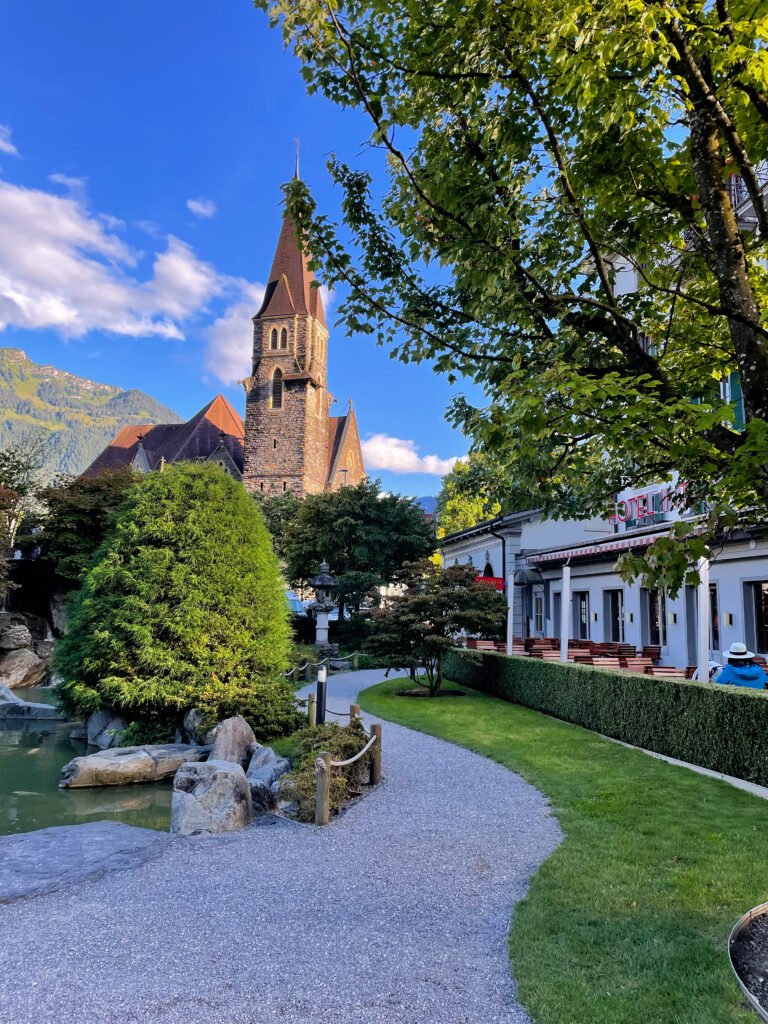
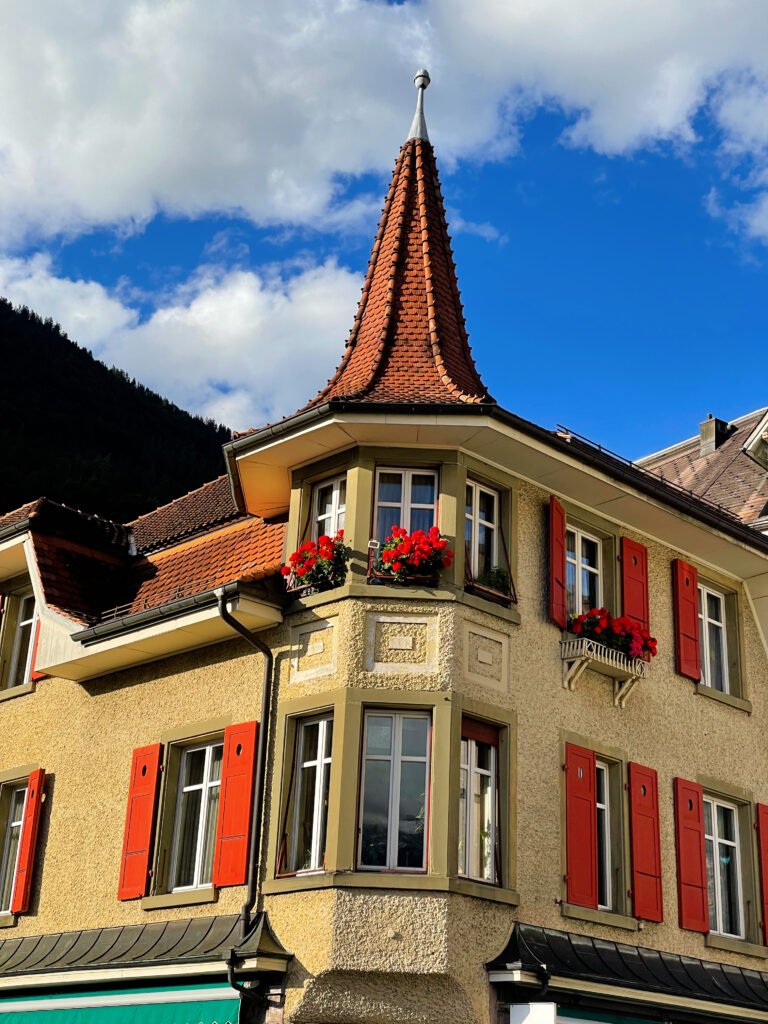
Top activities in Interlaken
- Explore the heart of Interlaken
- Canyoning
- Paragliding
- Ski or snowboard starting from Grindelwald
- Adventure with white water rafting
- Kayak on the picturesque Lake Brienz
- Boat cruise on Lake Thun
- For the adrenaline seekers, there’s skydiving and bungee jumping
- Plus, there are loads of beautiful places around Interlaken to explore, which I’ll talk about in my next posts.
DAY 6
Exploring Blausee & Lake Oeschinen
We kicked off the day with a hearty breakfast at our cozy Gasthaus in Habkern, then headed to the supermarket to grab some water, bread, charcuterie, and cheese for our hiking adventures. In Switzerland, Coop supermarkets are well-known for their affordability, so that’s a great place to stock up.
First stop: Blausee
We drove 45-minute from Habkern to Blausee (35 minutes from Interlaken), strategically chosen as our first destination since it’s situated between Habkern and Oeschinensee and only requires a short walk to reach.
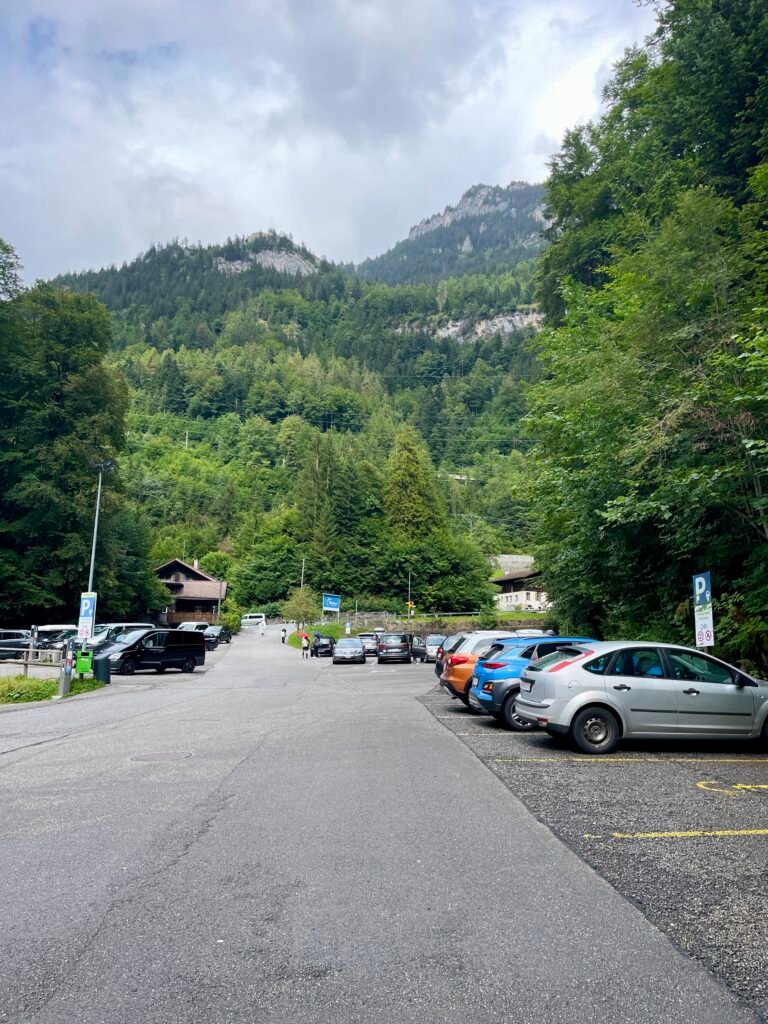
How to get to Lake Blausee?
Lake Blausee is notably accessible, featuring a variety of amenities. Unlike other Swiss Blue Lakes, which require hours of hiking, Blausee is more visitor-friendly. However, it’s important to note that due to its accessibility and facilities, Blausee becomes quite crowded during the peak months of July and August. Furthermore, access to the lake is controlled through a gated entry, requiring a fee (9 CHF for students and 13 CHF for adults). It’s the only way to access Blausee’s nature area in Kandersteg. Parking your car or getting off at the “Blausee Kandersteg” bus stop puts you just a 5-minute walk away from the lakeshore.
In Summary:
By Car: Driving from Interlaken, it’s a 35-minute trip to the Blausee parking area. Look out for a big sign pointing to the lake – the parking lot is right there, surrounded by trees.
By public transport: Head to Kandersteg or Frutigen first. From there, catch bus number 230. It’s a short ride, under 15 minutes, to the “Blausee BE” stop. Remember, the bus runs only once an hour, so plan accordingly. The SBB timetable online can help you plan your trip.
Hiking or biking: For the more adventurous, hiking or biking to Lake Blausee adds to the experience. Start from Kandersteg train station and follow the hiking path number 743 (Kulturweg Frutigenland). This family-friendly path takes around 1.5 hours on foot (quicker by bike). The path is easy to follow, with just a small 300m incline/decline over the round trip.
Winter visitors with snowshoes might need a bit more time. The trail along the Kander river leads straight to Blausee. A new footbridge crosses the river, taking you directly to the Blausee playground and BBQ area.
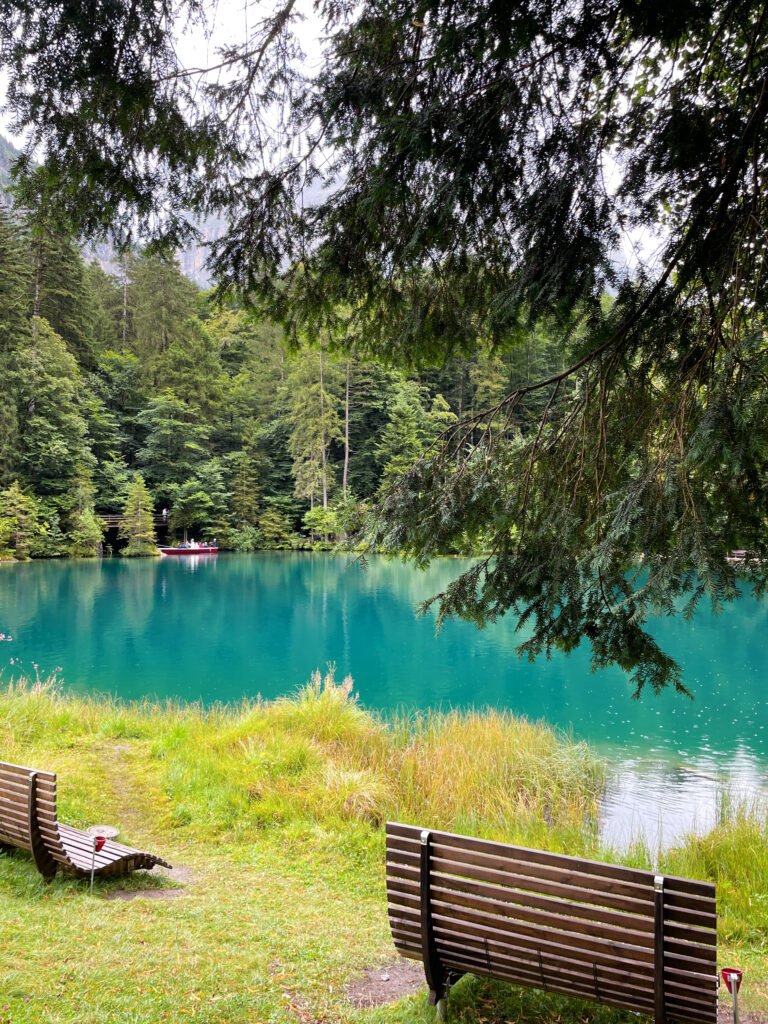
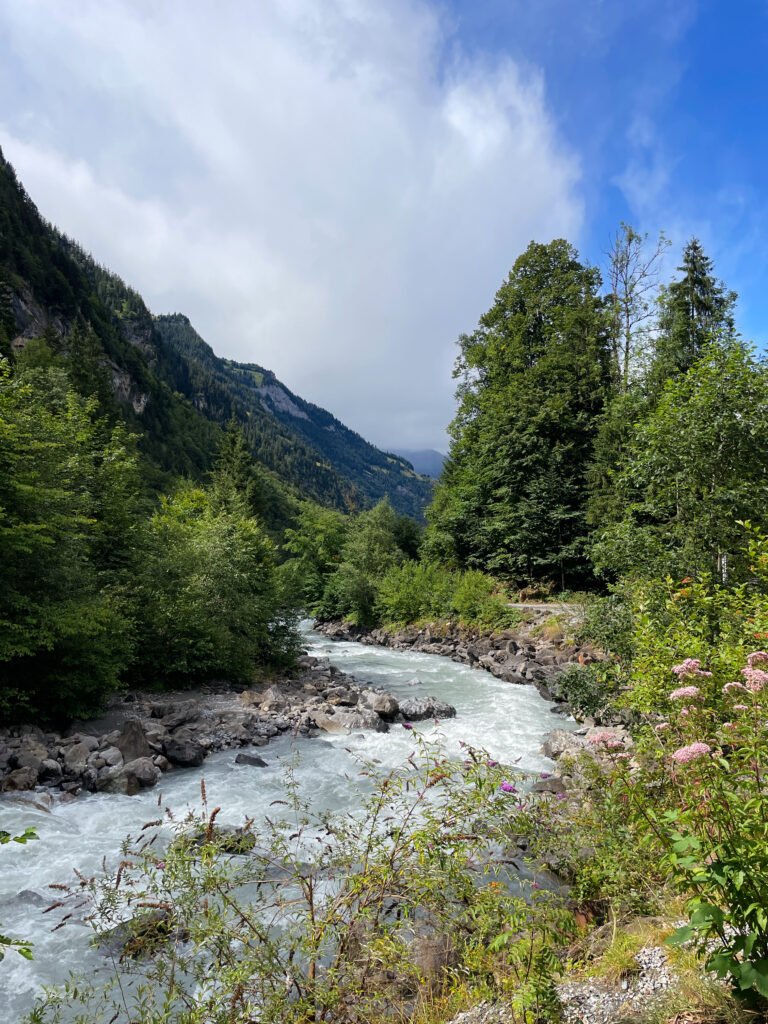
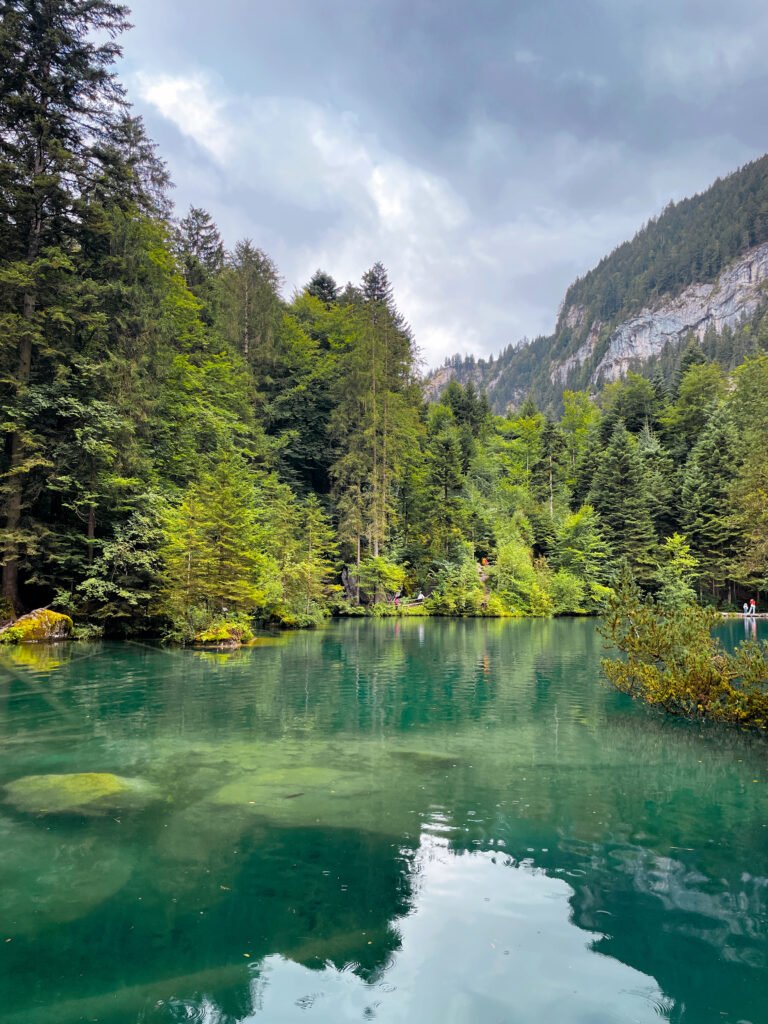
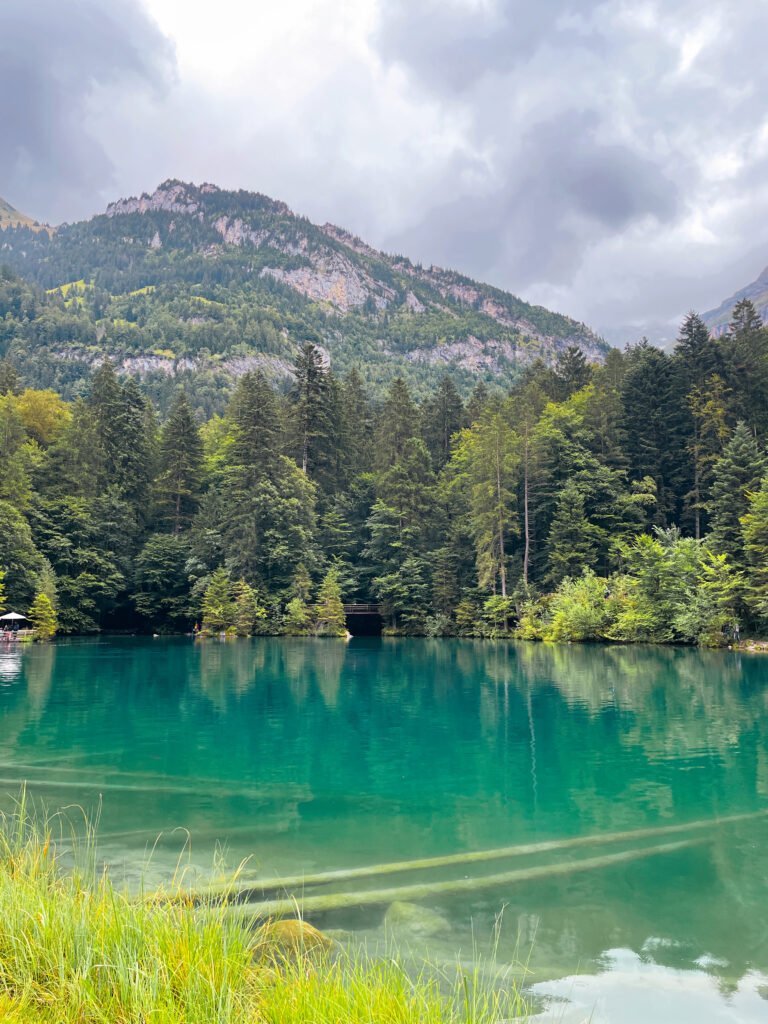
Things to do at Blausee
- Boat ride on the Lake: Take a quick but memorable trip around the lake on a glass-bottom boat. It’s a brief ride, included with your summer entry ticket, but the unique view of the underwater world makes it worthwhile.
- Outdoor movies & music: During summer, the lake becomes a venue for open-air movies and concerts, catering to various musical tastes.
- Diving: Dive into the clear waters of Blausee from November to April. This exclusive experience is paired with a four-course gourmet meal at the Blausee Restaurant for 99 CHF per person. Remember, you’ll need a diving certificate to participate.
- Relax with a Spa day: Even if you’re not staying overnight, you can enjoy a day of relaxation at the Hotel Blausee’s wellness area. Treat yourself to a massage, chill out in the sauna, or enjoy the whirlpool. It’s best to book your spa day in advance.
- Brunch and dining by the lake: The restaurant offers a brunch on weekends, either on the terrace with lake views or inside. Booking in advance is recommended to secure your spot.
Is Blausee worth visiting?
It really comes down to what you enjoy. Blausee is definitely a stunning spot, but I feel it’s a bit overrated, especially on Instagram. It’s perfect for a day of pampering at the hotel spa, and families will love the large playground and barbecue facilities. However, if you’re just looking to walk around the lake – a walk that takes less than 30 minutes – for 13 CHF, it might not be worth the trip.
Second stop: Oeschinensee
We moved on with our day with a short 10-minute ride from Blausee to the picturesque Lake Oeschinen.
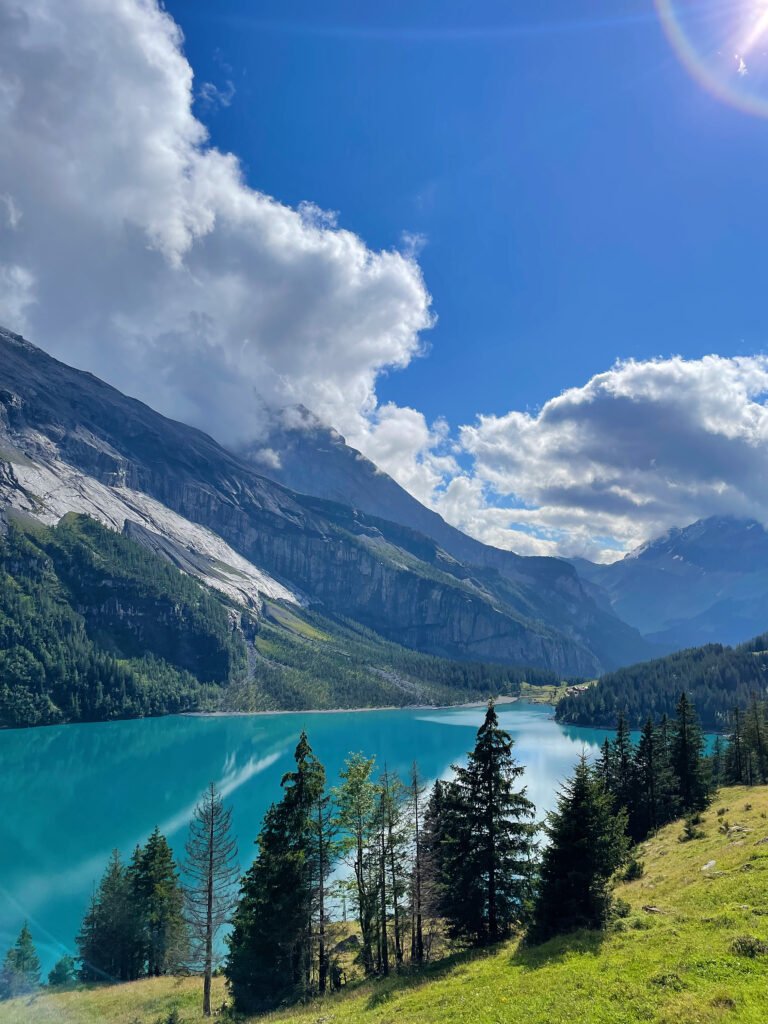
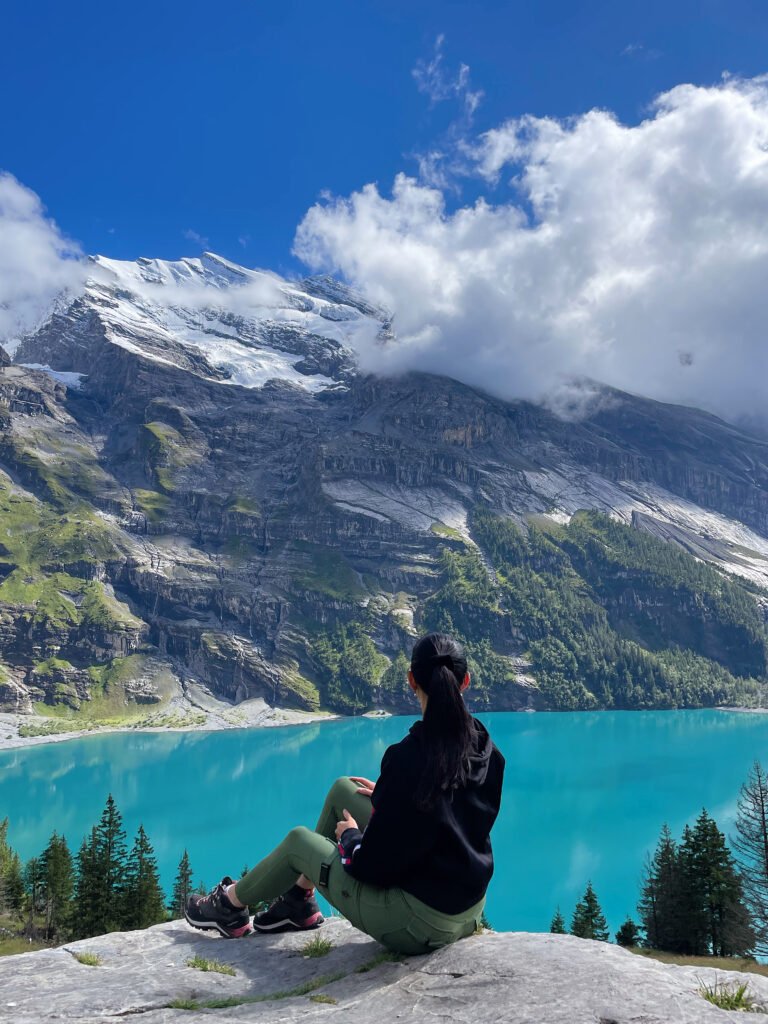

Getting there
By car, just follow the signs to the Oeschinensee cable car station. Even if the parking seems full, there’s additional space in a grassy area further down. Remember to pay for parking at the meter machines or using an app.
If you’re coming by train from Interlaken, catch a train to Speiz, then onto Kandersteg. From there, it’s a 15-minute walk to the gondola station, easily found by following the signs or the crowd.
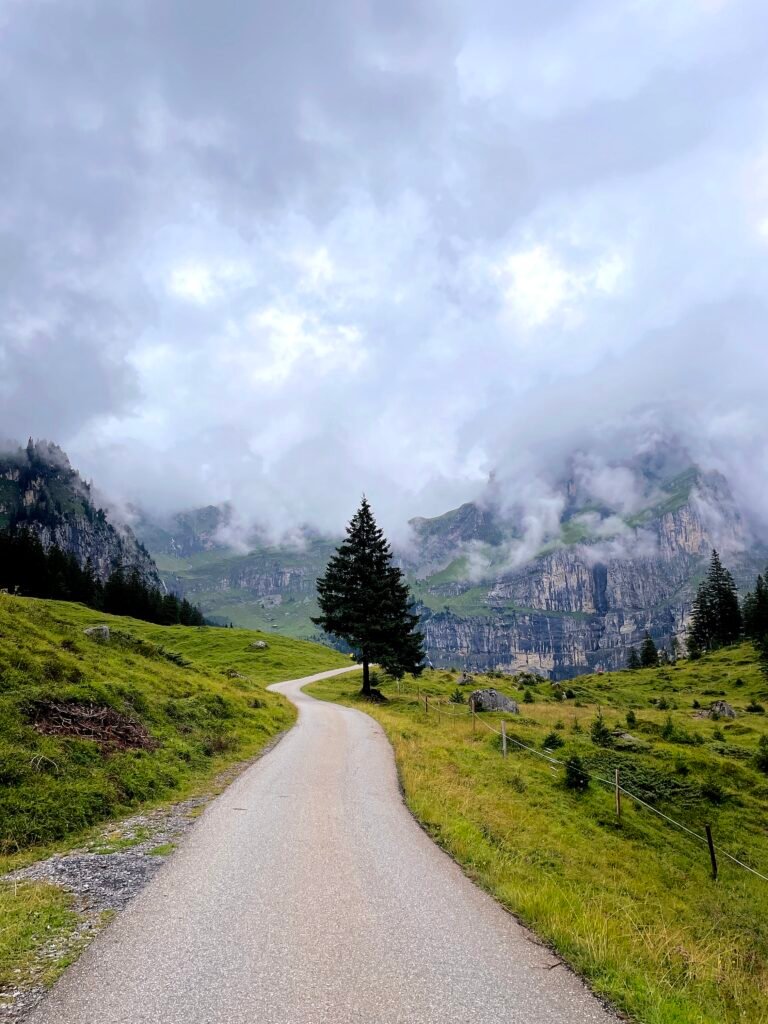
Overview:
- Trail: 8.5 km loop
- Time: About 3 hours
- Level: moderate to difficult
- Condition: The path is narrow, rocky, and dirt-covered, climbing and descending 466 meters
- Elevation: the highest point at 2000 meters
- When to visit? Best visited from late June to October, the cable car starts operating in late May.
- Costs: In 2024, adults pay CHF 32 and children CHF 16, with discounts available for SBB Halbtax and Junior Card holders.
- Services: Additional amenities include a restaurant, fire pit, sculpture garden, and an alpine slide, ensuring there’s something for everyone at Lake Oeschinen.
Hiking trail around Oeschinen lake:
The panorama trail around Oeschinen Lake is a favorite among many. For those starting at the parking lot, there are two options:
1. You can either hike directly to the lake. This is a 1.5 hour hike on a steep forest path that leads directly to the lake, where you’ll also find a restaurant and be able to bathe in the sun.
2. Alternatively, you can opt for the cable car ride (advance booking required). There are a few ways to reach the lake once you’re up there:
- A straightforward hike from the cable car station to the lake, taking around 25 minutes.
- A convenient electric shuttle, perfect for those not keen on hiking or with limited mobility, costing 10 CHF for adults and 8 CHF for children.
- The panoramic trail, offering stunning views from above which takes up to 3 hours to get to the lakeshore.
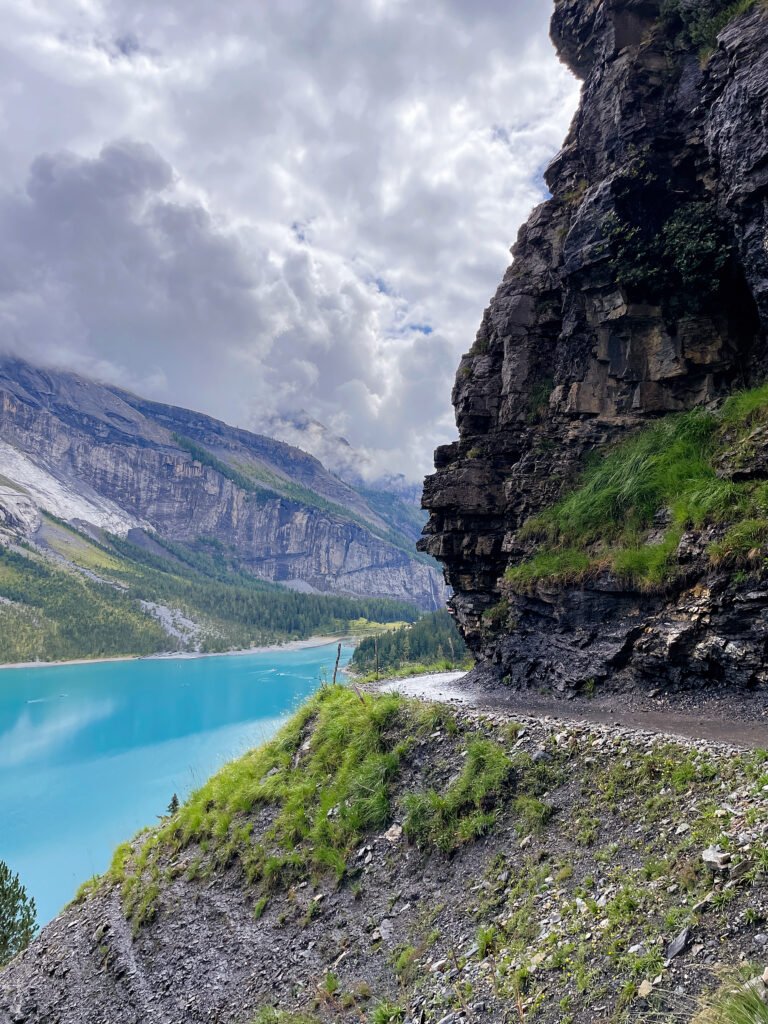
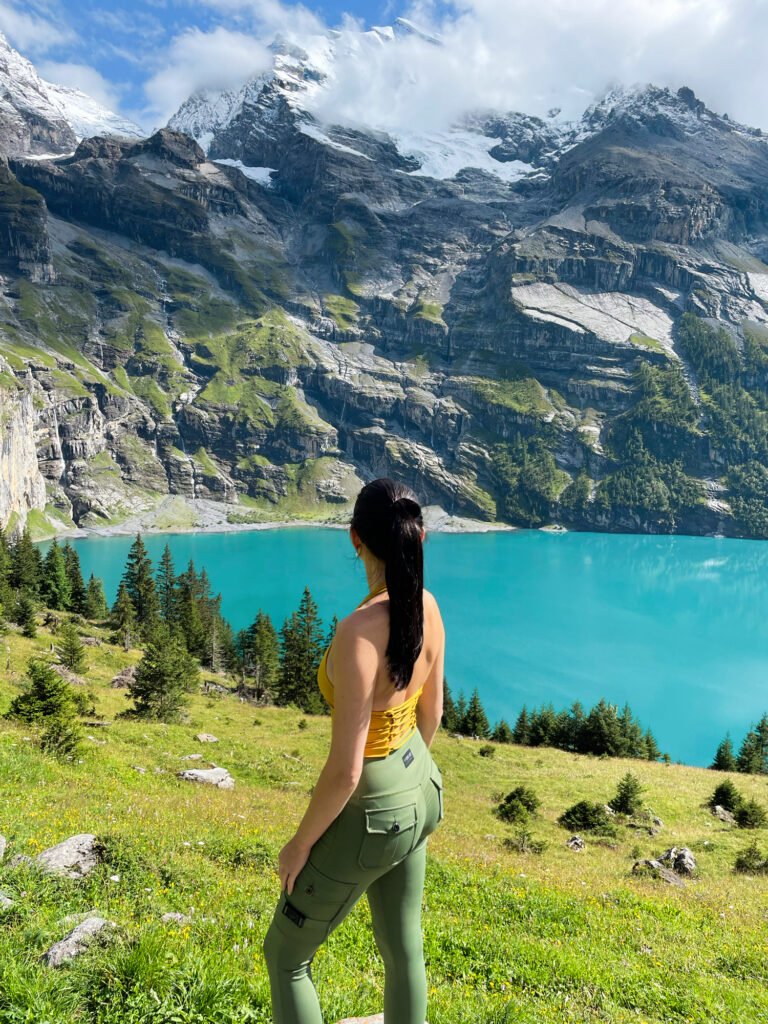
Things to do at the lake
Once at Lake Oeschinen, the possibilities are plentiful:
1. Take a refreshing swim.
2. Enjoy a lakeside picnic.
3. Rent a rowboat for a beautiful time on the water.
4. Enjoy a meal at one of the local huts, offering both international and local dishes.
5. Experience the thrill of the toboggan run, gliding through the beautiful landscape.
DAY 7
Gelmerbahn & Aareschlucht
First stop: Gelmerbahn, Guttannen
On the seventh day of our adventure, we set out from Habkern, driving for about an hour to reach an experience I’ll never forget – the Gelmerbahn funicular in Guttannen. This isn’t just any funicular; it’s the steepest open-air in Europe, offering a ride like no other.
What is the Gelmerbahn Funicular about?
Back in 1926, the Gelmerbahn was built to haul construction materials up the mountain for a dam. Nowadays, it serves a new purpose, carrying 24 passengers at a time on an extraordinary open-air journey to the beautiful Gelmersee, a lake with stunning turquoise waters.
Opening dates:
The Gelmerbahn welcomes visitors from June to mid-October. Operating hours vary by month, so it’s best to check ahead.
Costs:
Adult tickets are 18 CHF one-way and 36 CHF for a return trip, while tickets for kids aged 6–15 are half that price. Booking in advance is advisable to secure your spot.
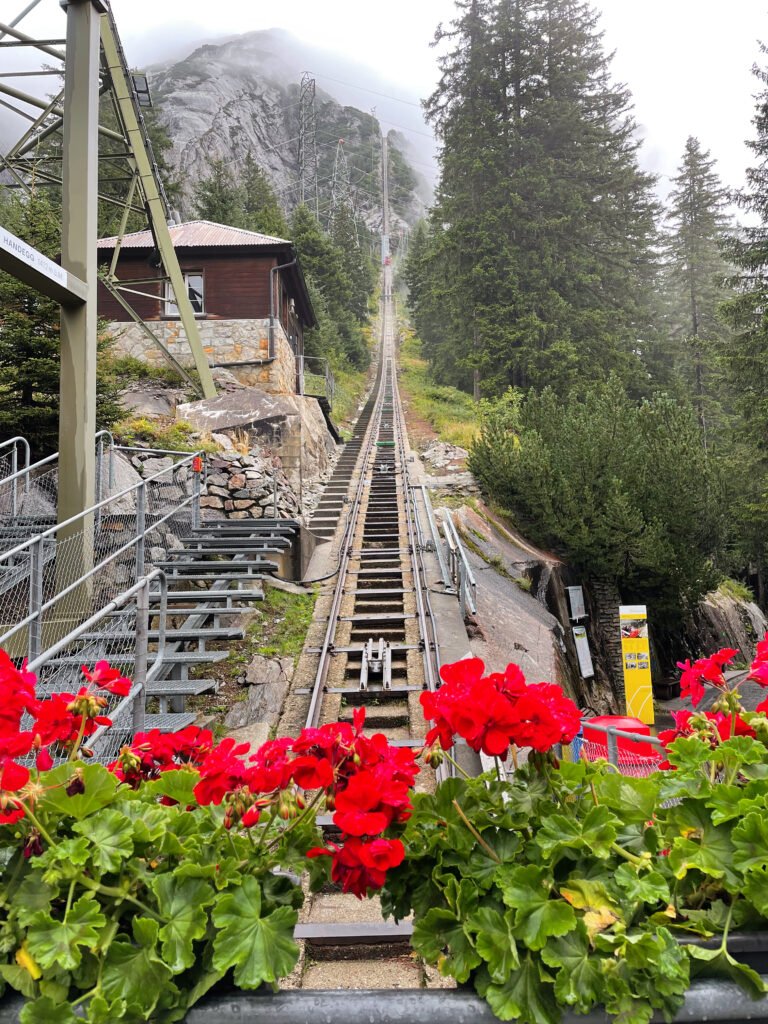
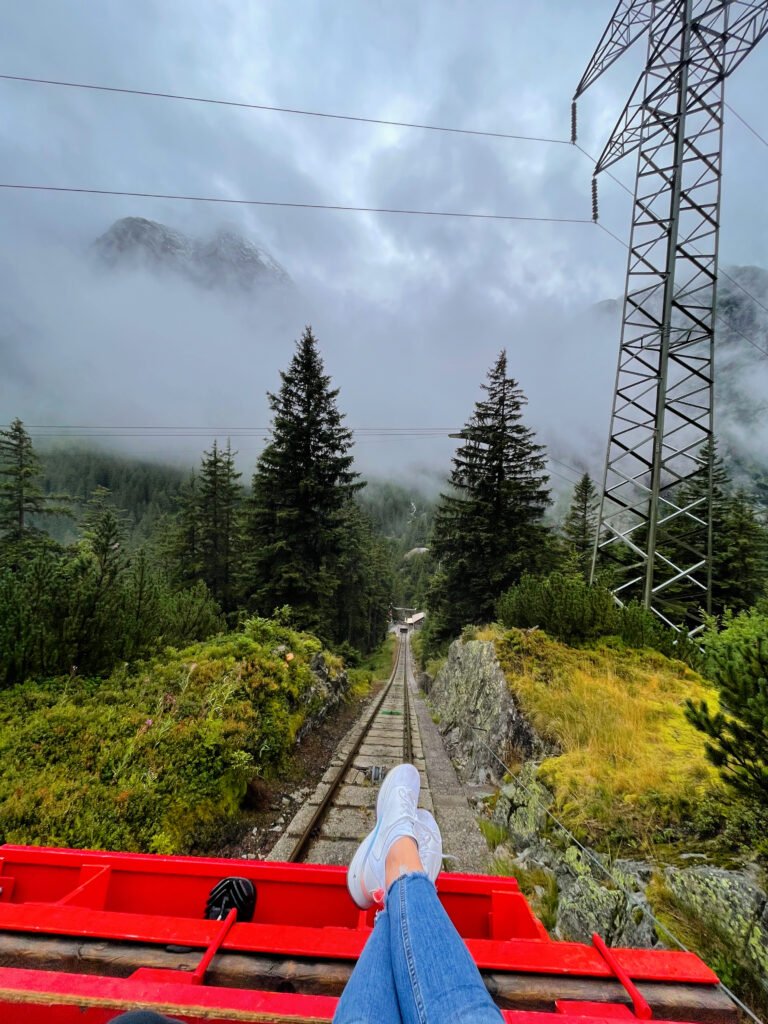
Getting to the Gelmerbahn:
The Gelmerbahn is nestled in the Bernese Oberland region, with clear road signs guiding you there.
- By car: Just plug in the GPS coordinates (Parking GPS: 46°36’43.4″N 8°18’33.6″E) or set your destination to Hotel Handeck in Guttannen. You’ll see a sign for the Gelmerbahn just before you get to the hotel. There’s free parking available, and if that’s full, an overflow area on a nearby grassy field. From there, a short walk takes you to the funicular station.
- By bus: Catch a train to Meiringen, then bus 161 to the Handegg, Gelmerbahn stop. There’s a bit of a walk to the station, including crossing a suspension bridge.
Exploring around Gelmersee
Once you’re up there, consider taking the 4.5 km hiking loop around the lake. It’ll take about 2 hours to complete this moderately challenging trail, which winds through narrow paths, rocky and uneven at times, all at an elevation of 1850 meters. The hike is optional, but it’s a great way to fully experience the beauty of Gelmersee and its surroundings.
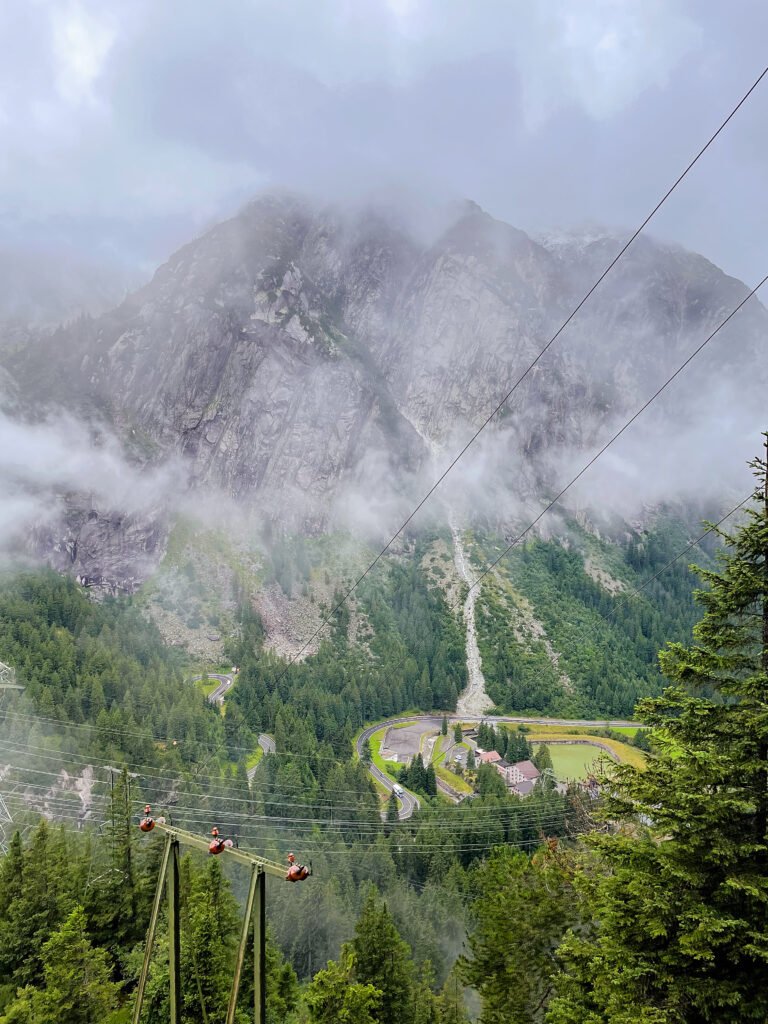
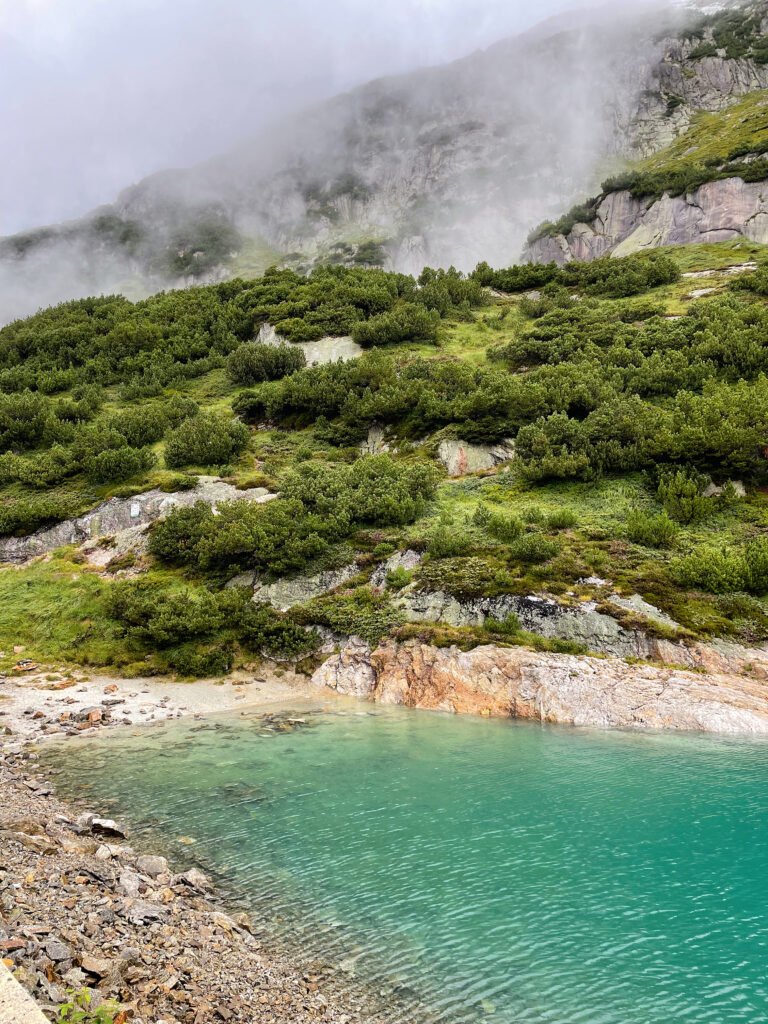
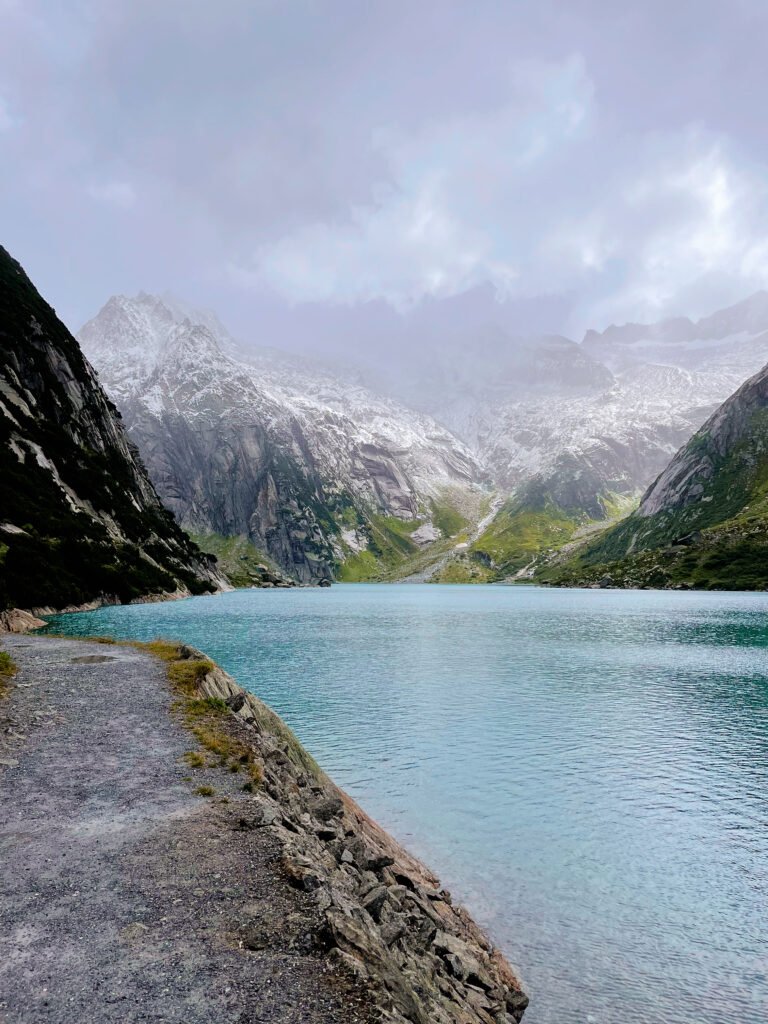
Next stop: Aareschlucht, Guttannen
Right after our exciting ride on the Gelmerbahn, we headed back for about 25 minutes to start our next exploration at the Aare Gorge. For anyone thinking of visiting these places, it’s a good idea to start with a walk in the Aare Gorge. It’s an easy, kid-friendly path that stretches 1.4 km one way. Walking there and back takes about 2 hours, which is perfect before you go on to experience the fun ride on the Gelmerbahn and explore the beautiful surroundings of Lake Gelmer.
What is the Aare Gorge?
The Aare Gorge is a fascinating place. There’s this huge rock wall called “Kirchet” that divides the lower valley from the upper valley. For thousands and thousands of years, the Aare River has been cutting through the rock of the “Kirchet,” creating the Aare Gorge. In some spots, this gorge is really narrow, only about 1 or 2 meters wide.
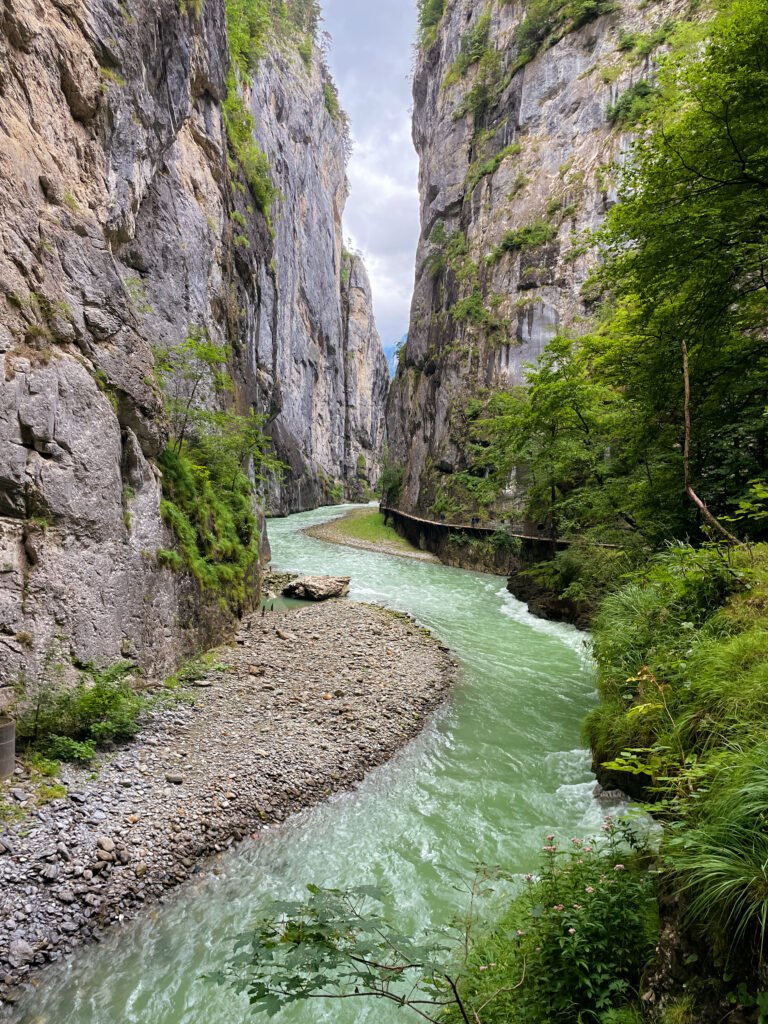
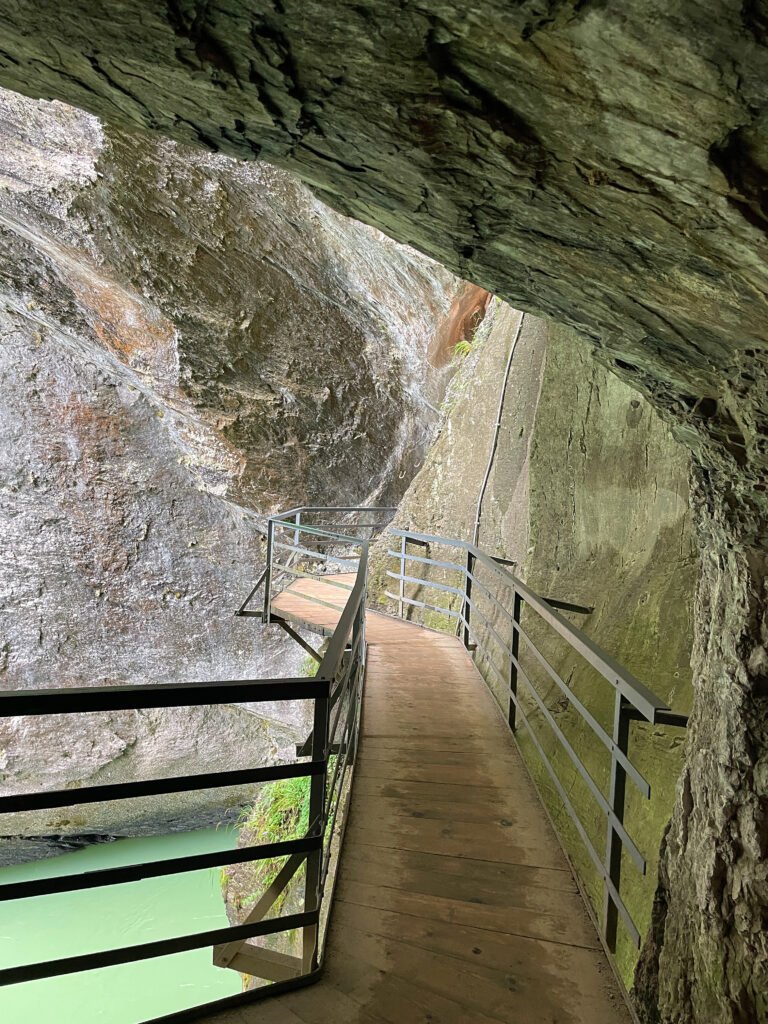
Overview:
- Trail: 1.4 km long and takes
- Time: Around an hour to walk
- Level: Easy walk that’s great for families with kids.
- Costs: The price is between 7 and 10 euros.
- When it’s open: From April to October.
- Opening hours: You can visit any day from 8:30 in the morning until 5:30 in the evening.
- Address: Aareschlucht, 3862 Innertkirchen.
- Is it kid friendly?: Yes, it’s a great place for kids.
- Can you bring dogs?: Yes, dogs are welcome too.
- Is it easy to get sround?: It’s partly accessible for everyone.
How to get there:
There are two ways to get in – one entrance is on the east side and the other is on the west. The entrance on the west, which is in a town called Meiringen, is probably the most popular one. Both entrances are easy to get to by train, with the Aareschlucht West station serving the western side of the gorge and the Aareschlucht Ost (East) station giving access to the eastern side.
DAY 8
Trift Bridge – a spectacular foot bridge
On our eighth day, about an hour-drive from Habkern, we embarked on another hike:
What is the Trift Bridge?
The Trift Bridge is a breathtaking footbridge in the Alps, suspended 100 meters up and extending 170 meters long. It’s set above the Trift Glacier area, promising extraordinary views for those who aren’t afraid of heights.
How does global warming affect the Trift Glacier?
Global warming is causing glaciers to melt, including the Trift Glacier. This melting forced the need for a bridge in 2004 because the glacier shrank too much for people to reach a certain hut. The bridge, inspired by similar ones in Nepal, quickly attracted tourists. In 2009, a newer, safer bridge was built to provide easier access. Now, it’s among the tallest and longest pedestrian bridges in the Alps. Visitors can take a cable car, originally meant for hauling cargo, up to near the bridge, making the trip there an adventure of its own.
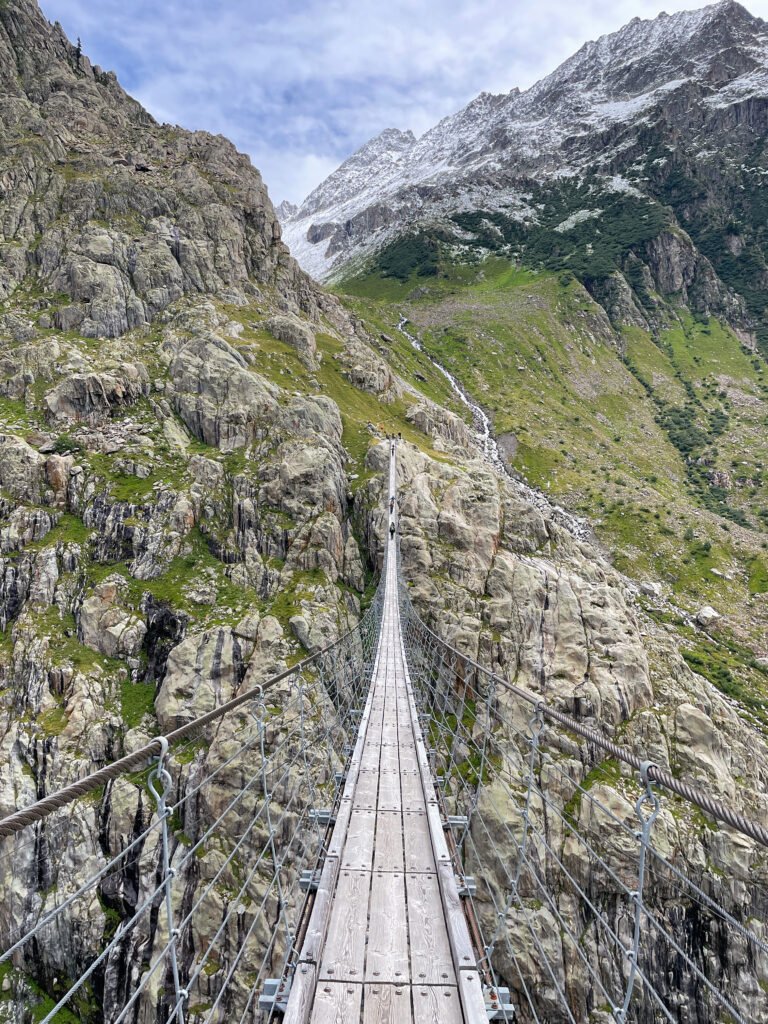
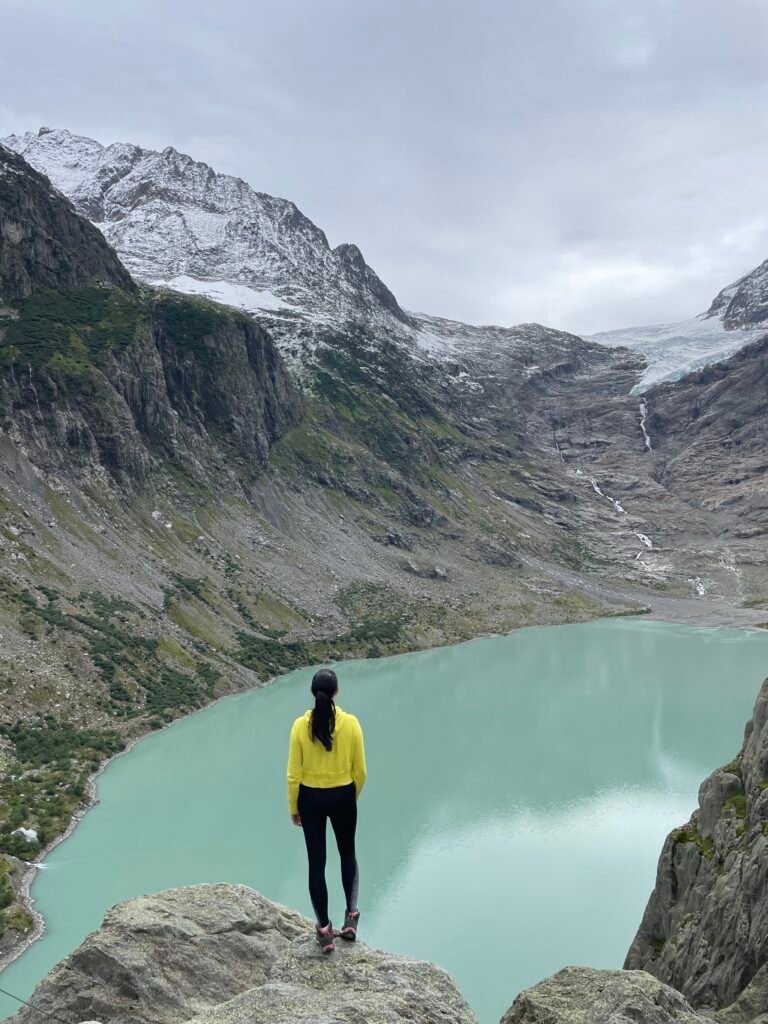
How to get there?
The Trift Bridge is near Gadmen in the Grimselwelt region, in the Bernese Oberland canton.
- By Car: It’s a 40-minute drive from Interlaken, about 1.5 hours from Zurich, and 60 minutes from Lucerne. There’s free parking near Nessental station, but getting there early is wise, especially on sunny or holiday weekends.
- By Public Transportation: Take a yellow Postauto bus to Nessenthal Station, right in front of the cable car station. The trip from Interlaken takes about an hour, including a transfer at Innertkirchen Grimseltor.
About the hike:
The hike starts at Nessental Station with several route options:
- Hike 1 (Easiest option): Ride the cable car up and hike to the bridge, then back. Without breaks, it’s a 3-4 hour hike.
- Hike 2 (More difficult option): Skip the cable car, hike up to the bridge and back down, totaling 5-7 hours without breaks.
- Hike 3 (Strenuous hike): From the valley or mountain station, extend your hike to Windegghütte via an alpine path, adding another hour for experienced hikers. There’s also an easier route to the hut.
- Hike 4 (Alpine hike): Seasoned hikers can go from the bridge to the SAC-Trifthütte, a 3-hour trek suitable for alpine hikers, preferably with an overnight stay.
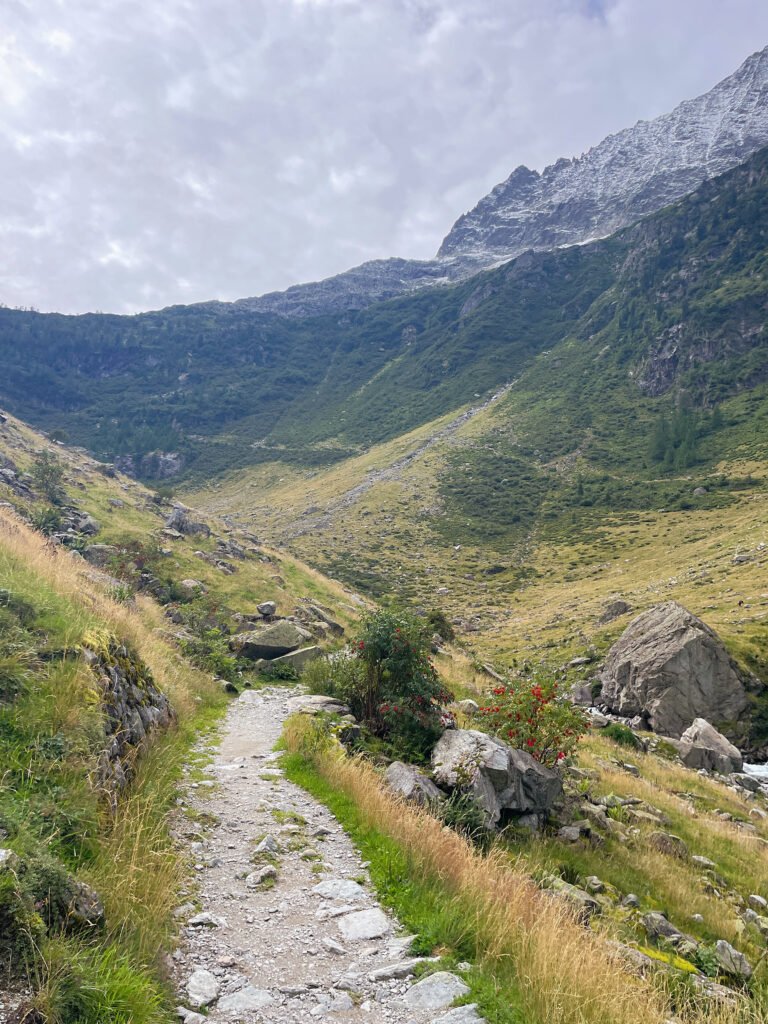
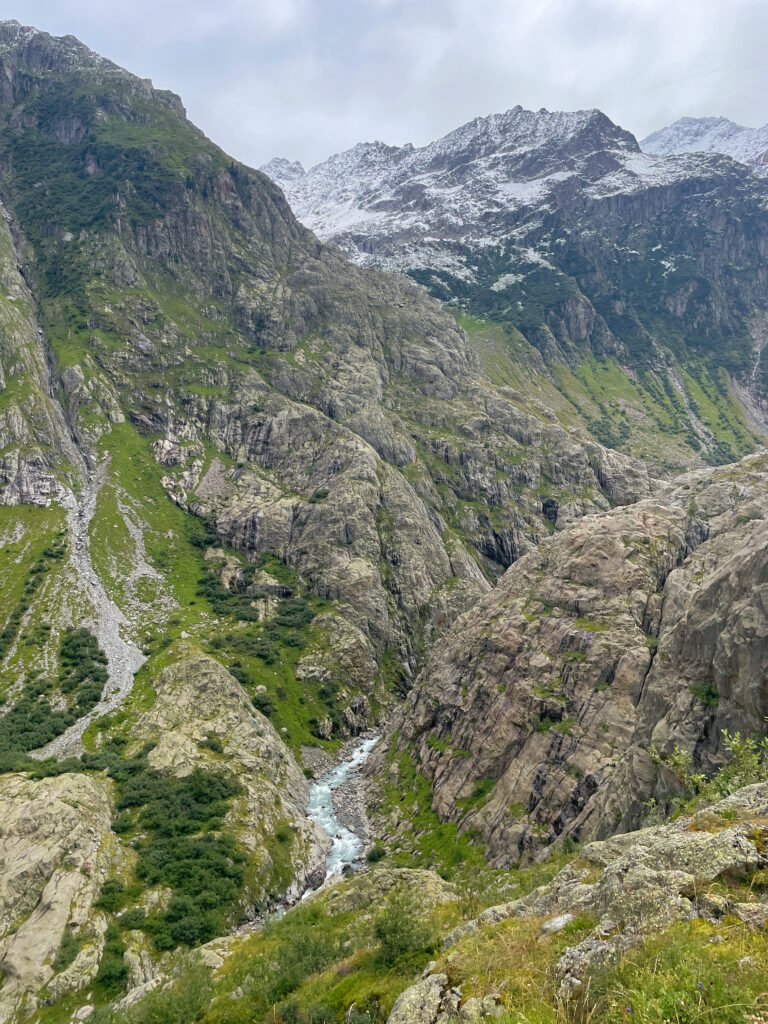
Hike difficulty:
The trail to the Trift Bridge is marked red-and-white, indicating a relatively easy hike with some incline. Beyond the bridge, the path becomes a challenging blue-and-white alpine trail, with ladders, river crossings, and exposed areas, all made safer with cables and ladders.
Overview:
- Start Point: Nessental Station, where you can start hiking or take the cable car to Triftbahn Station. Signs will guide you to the Trift Hut or the cable car station.
- Trift Gondola: Advance booking for the cable car, which fits 8 people and runs every 12 minutes, is recommended. The ride lasts about 10 minutes. Tickets are about 13 CHF one-way, with a return ticket at 26 CHF.
Facilities at Trift Bridge:
At the valley station, a kiosk sells snacks and drinks. There are two mountain huts for meals and accommodations, plus more restaurants. The area is exposed, so use the restroom before starting and bring sunscreen. Windegghütte, a short hike from the bridge, offers snacks and the option to stay overnight (booking in advance is advised). Trifthütte, sitting at 2520 meters, provides simple food and lodging options (ensure to book ahead).
Tip: Always carry cash since cards may not be accepted at the mountain huts or restaurants.
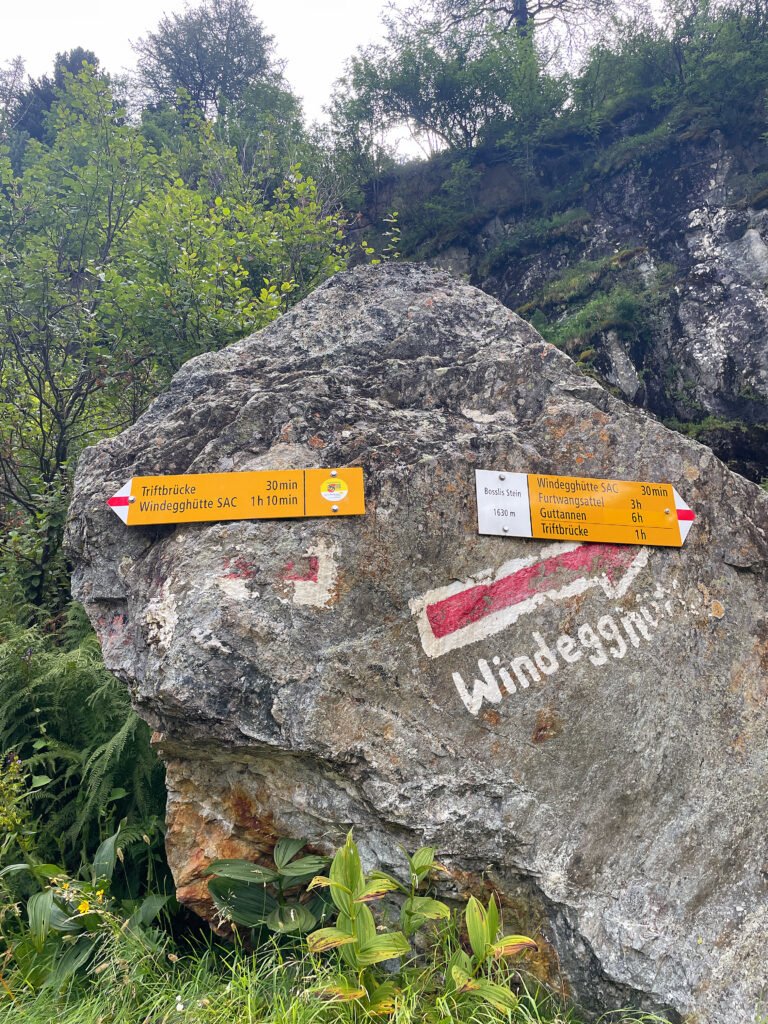
DAY 9
Lauterbrunnen
As our trip was nearing its end, we took a more relaxed pace and headed to Lauterbrunnen. This village lies in a breathtaking U-shaped valley, known as the Lauterbrunnen Valley, adorned with 72 waterfalls, a handful of cafés and restaurants, and a mix of hotels and hostels. Despite being a small village, it provides almost everything you might need. For the full experience, it’s recommended to stay at least one night, though be prepared for high accommodation costs, which seem steep even during the off-season.
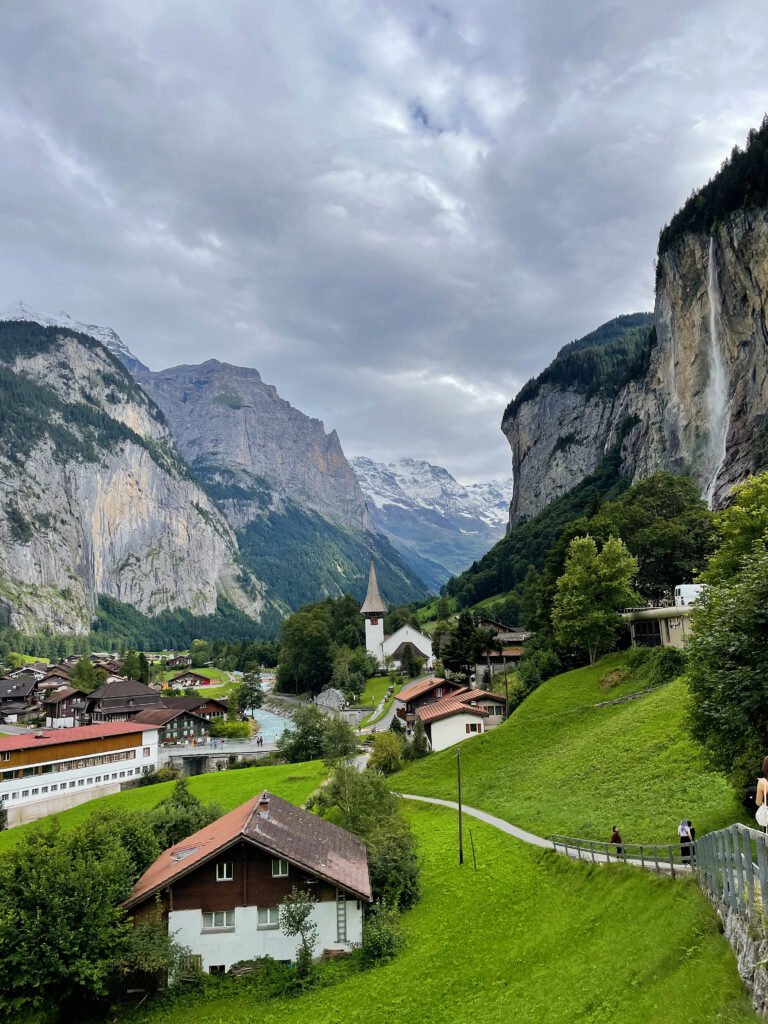
How to get to Lauterbrunnen from Interlaken:
Traveling from Interlaken to Lauterbrunnen is convenient, with multiple options available including hiking or cycling for the more adventurous.
– by Car: The quickest way, taking just 15 minutes from Interlaken.
– by Train: Hourly trains from Interlaken East Train Station make it easy, especially with a Swiss Travel Pass, to reach Lauterbrunnen Railway Station in 20 minutes, dropping you off in the heart of the valley.
– by Bus: Buses are frequent and budget-friendly, with the journey taking about 20 minutes and costing around $3.
Things to do in Lauterbrunnen:
1. Explore the waterfalls, especially the Staubbach Falls.
2. Visit the Lauterbrunnen Church and the town itself.
3. Try paragliding & skydiving for a bird’s eye view of the village.
4. Go hiking on the 500 km of trails suitable for all levels, including:
– Mürren to Allmendhubel Flower Trail
– Murren to Grütschalp
– Panoramaweg
– Alpweg
– Mürren is accessible by cable car to Grütschalp and train to Mürren BLM station.
– Wengen can be reached by cogwheel train, a 11-minute trip with departures every 30 minutes.
– Kleine Scheidegg, offering breathtaking views of the Eiger, Mönch, and Jungfrau peaks.
5. Enjoy winter sports or take scenic rides on the Luftseilbahn Wengen-Männlichen cable car and the gondola to First in Grindelwald.
6. Visit Jungfraujoch, known as the “Top of Europe”, nestled between the Jungfrau and Mönch peaks.
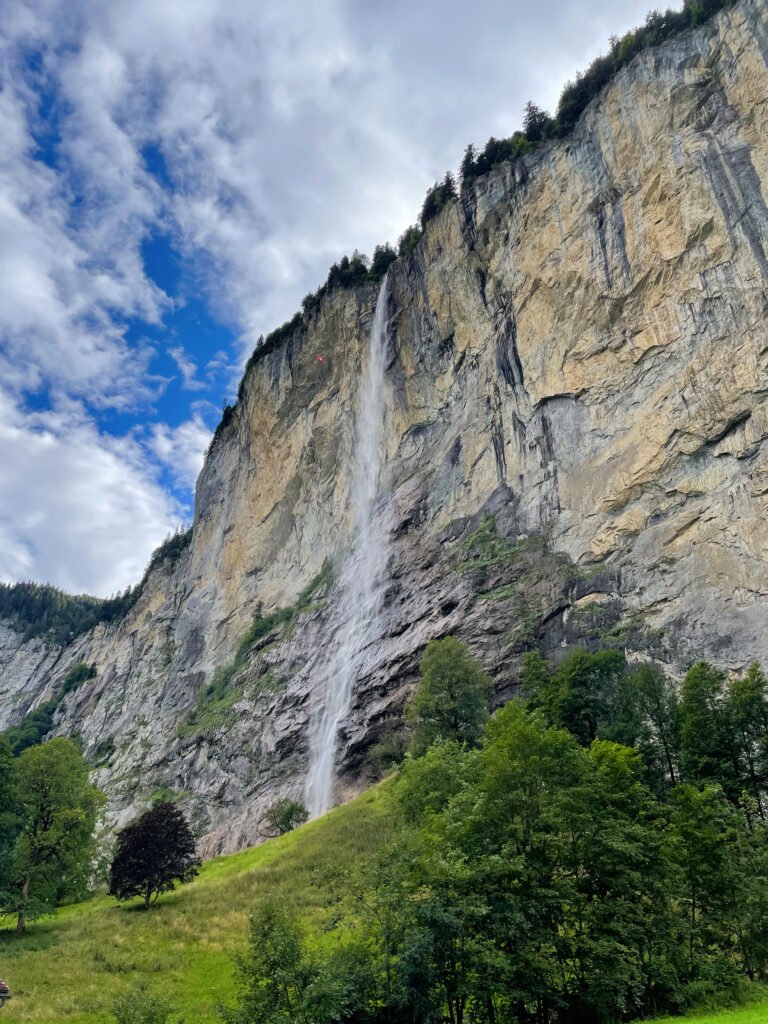
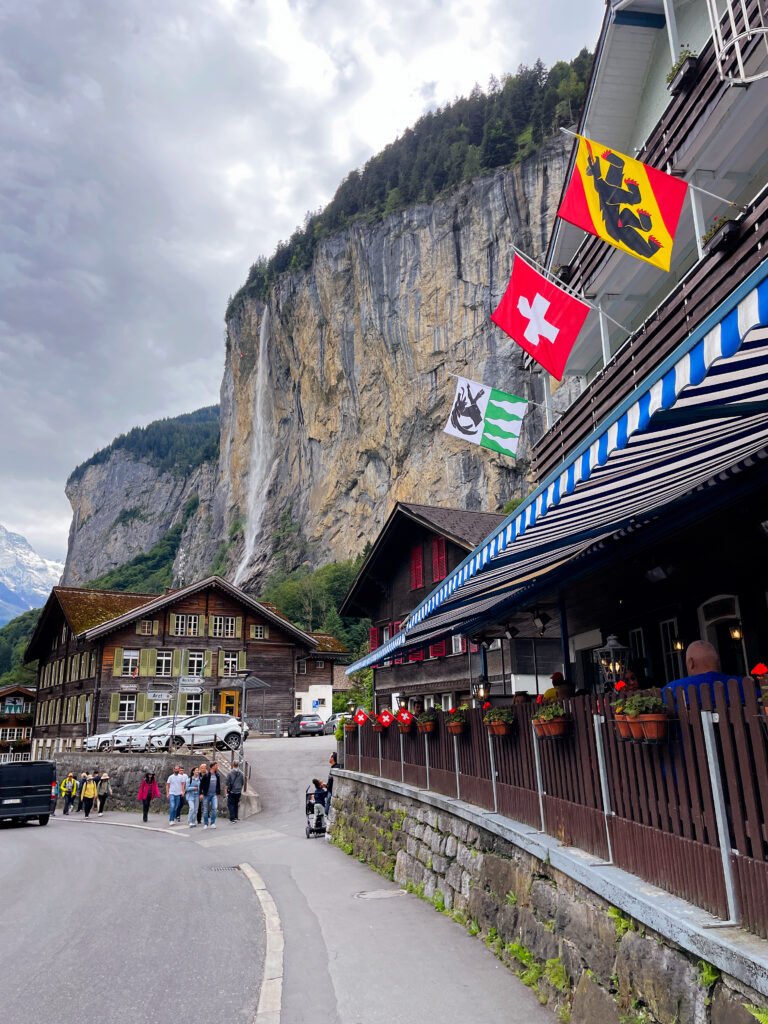
Most Instagrammable views and places in Lauterbrunnen:
1. Chalet Pironnet
2. The trail from Lauterbrunnen to Mürren for panoramic views, following the yellow signs marked “Mürren” uphill.
3. Lauterbrunnen Friedhof for a serene view, walking from the Tourist Info Center towards Staubbach Falls.
4. The path behind Staubbach Falls offers a unique perspective; the hike is short but steep, so wear sturdy shoes.
5. Discover the beauty from the other side of the river, starting from the train station and heading opposite the city signs.
6. Saint Bernard’s Church in Wengen, easily reached by train from Lauterbrunnen, walking down Dorfstrasse from the station.
7. Simply wandering upwards in the area can reveal countless breathtaking sights.
LAST BUT NOT LEAST
Saying goodbye to Interlaken and visiting Thun before heading back home
Our journey through the stunning mountains of Switzerland finally came to an end. We started our last day with breakfast at the cozy “Gasthaus” we were staying at, and then went into the city of Interlaken one more time to pick up some souvenirs. After that, we took a short drive, about half an hour, to Thun. There, we had one last leisurely walk and grabbed something to eat, taking in the beauty of Switzerland for one last time before we began our journey back home.
Thun is more than just a starting point for exploring the Bernese Oberland; it’s a city that beautifully introduces visitors to the history, culture, and stunning natural landscapes of this Swiss region. Not only is Thun celebrated for its strategic location, but also for its gorgeous parks and bustling Old Town.
How to get to Thun?
- By car: Thun is easily reachable via the A6 motorway. It takes roughly 30 minutes to get there from Interlaken, about an hour from Zurich, and 20 minutes from Bern.
- By bus: Buses connect Thun with other Swiss cities. The bus ride from Zurich takes approximately 2 hours, and from Bern, it’s about 30 minutes.
- By train: The city is well linked with Switzerland’s railway network, offering frequent services from Zurich, Bern, and Geneva. The train ride from Zurich is about an hour, and from Bern, it’s around 20 minutes.
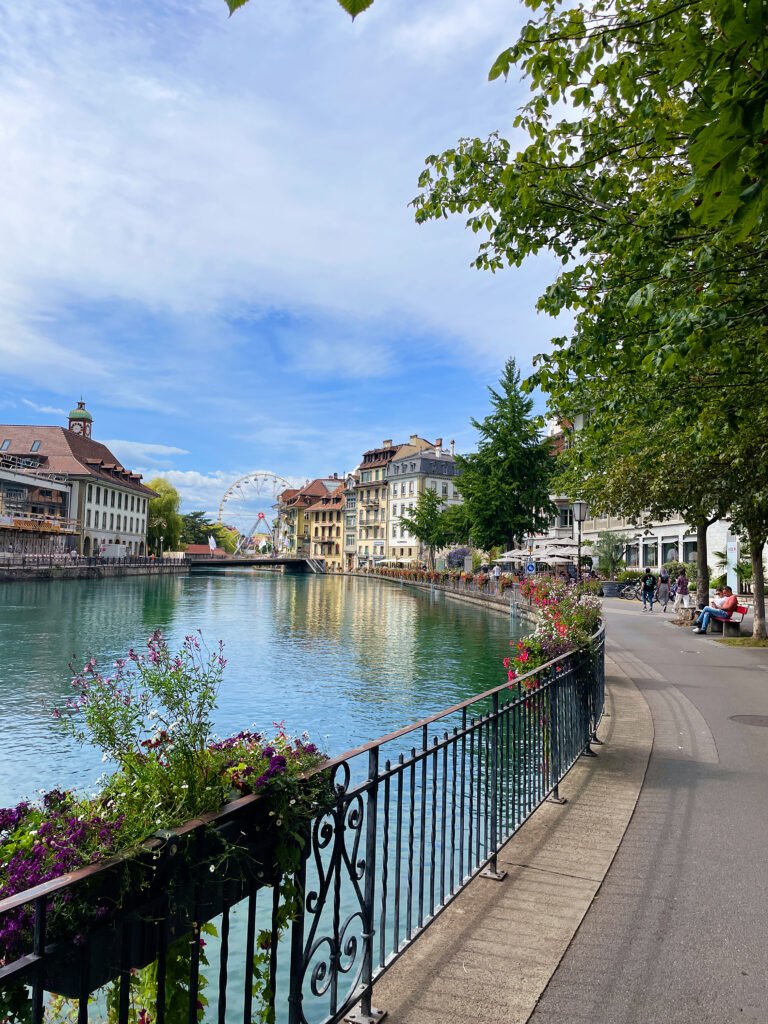
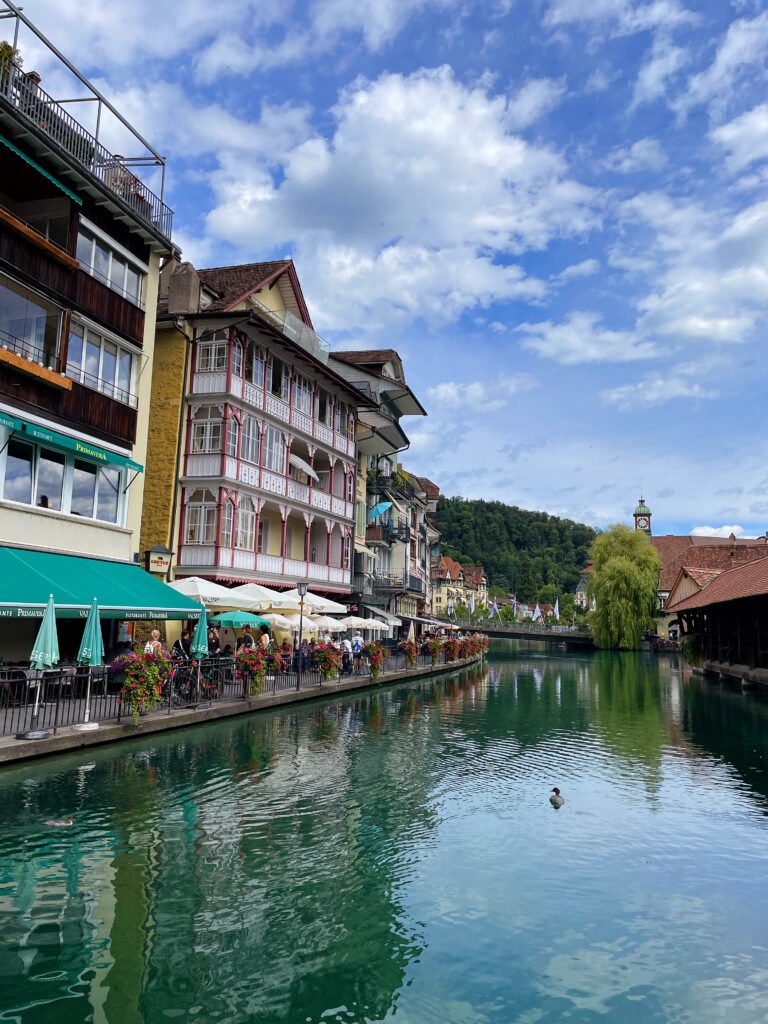
How to spend a day in Thun – Things to see and do:
1. Discover the old town: Wander through the Old Town’s quaint narrow streets, browsing the shops and sampling local cuisine.
2. Enjoy a boat ride: Viewing the city from the lake offers a unique perspective and stunning views. You can start from Interlaken and make your way back to Thun by boat.
3. Watch the river surfers: Thun’s river surfers are incredibly skilled, offering a spectacle similar to what you might see in Munich. It’s worth watching them ride the waves along the Thun river.
4. Hike in the surrounding mountains: The area around Thun is perfect for hiking or biking, with plenty of trails that offer picturesque views of the Swiss Alps.
5. Explore the beatus caves: Situated in the mountains above Thun, these caves are a natural wonder, filled with stalactites and stalagmites.
6. Visit the Thun panorama: Check out this panoramic artwork that captures the Battle of Thun from 1499.
